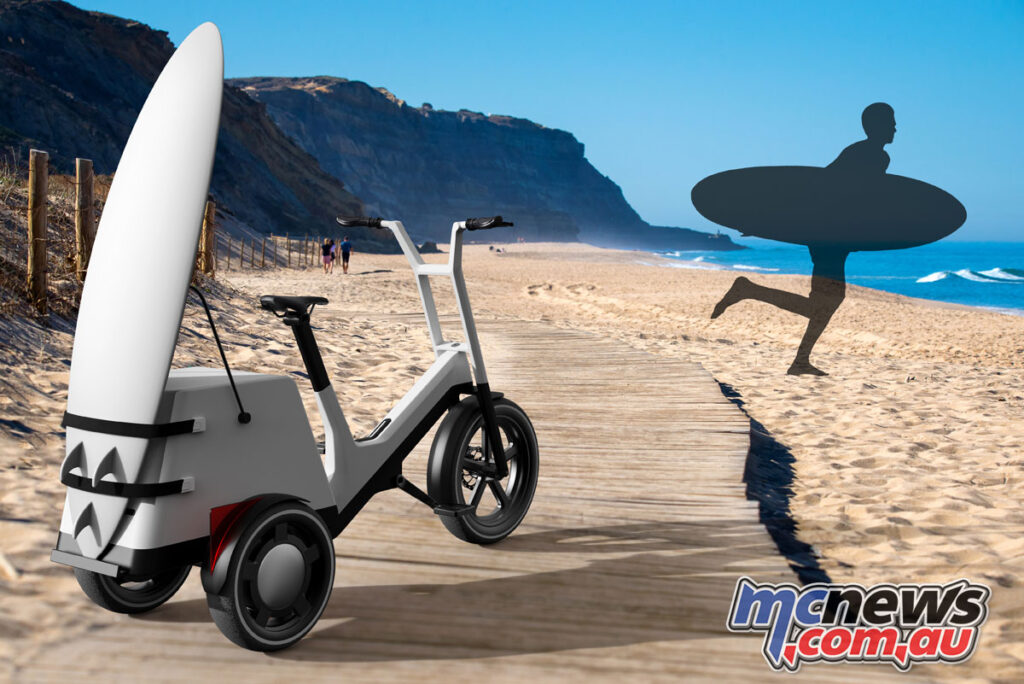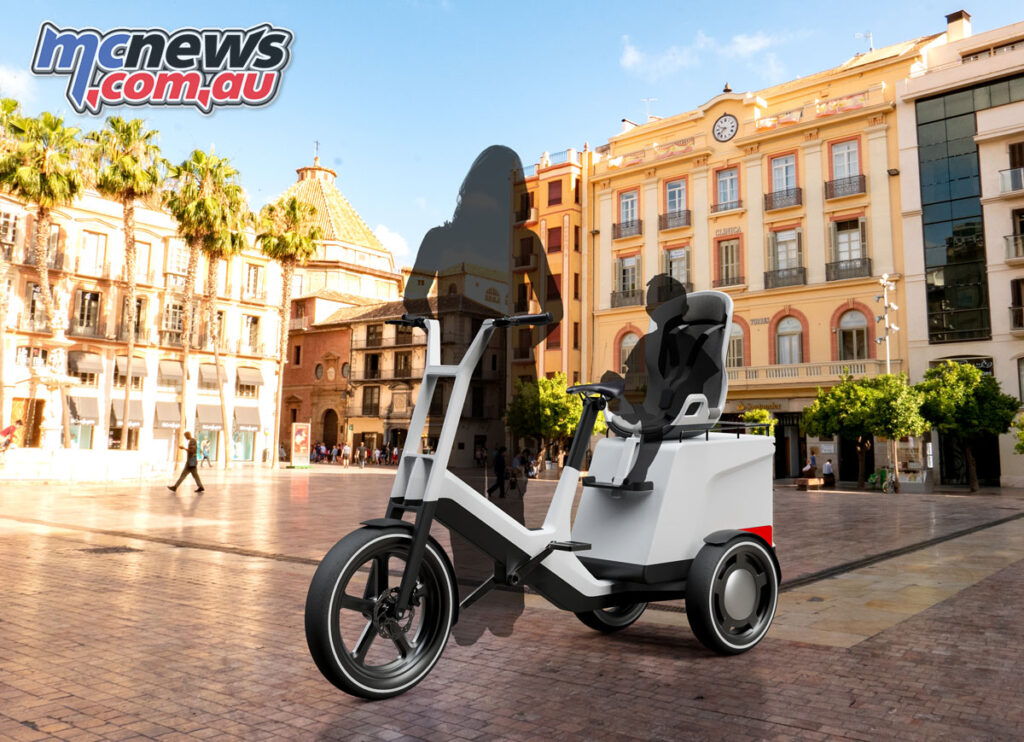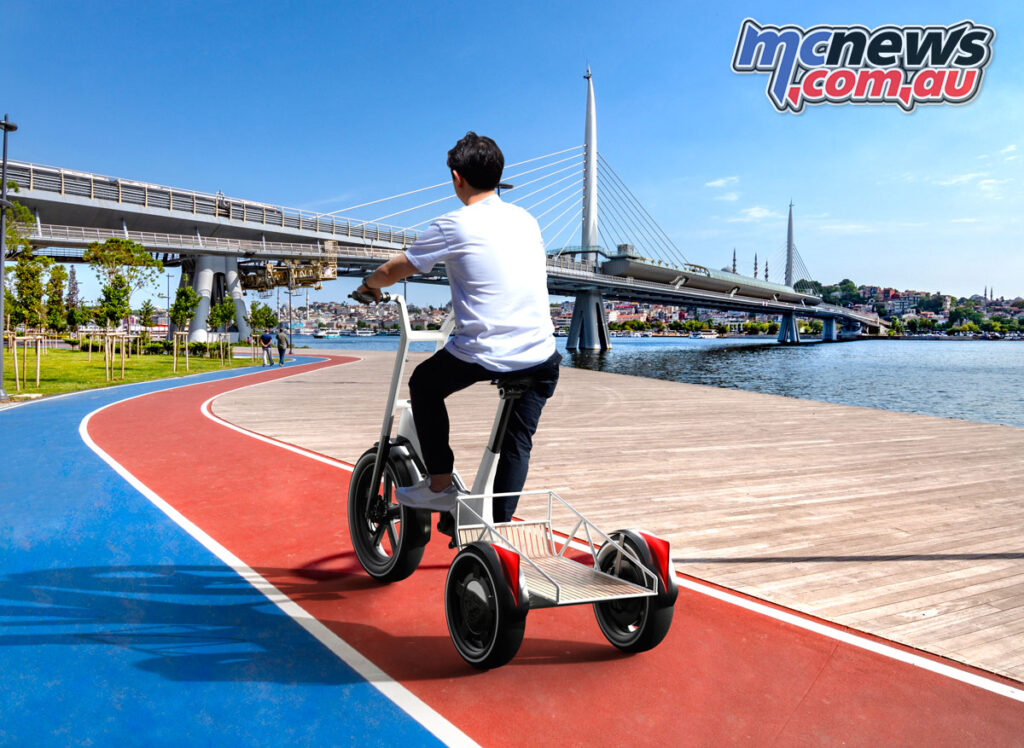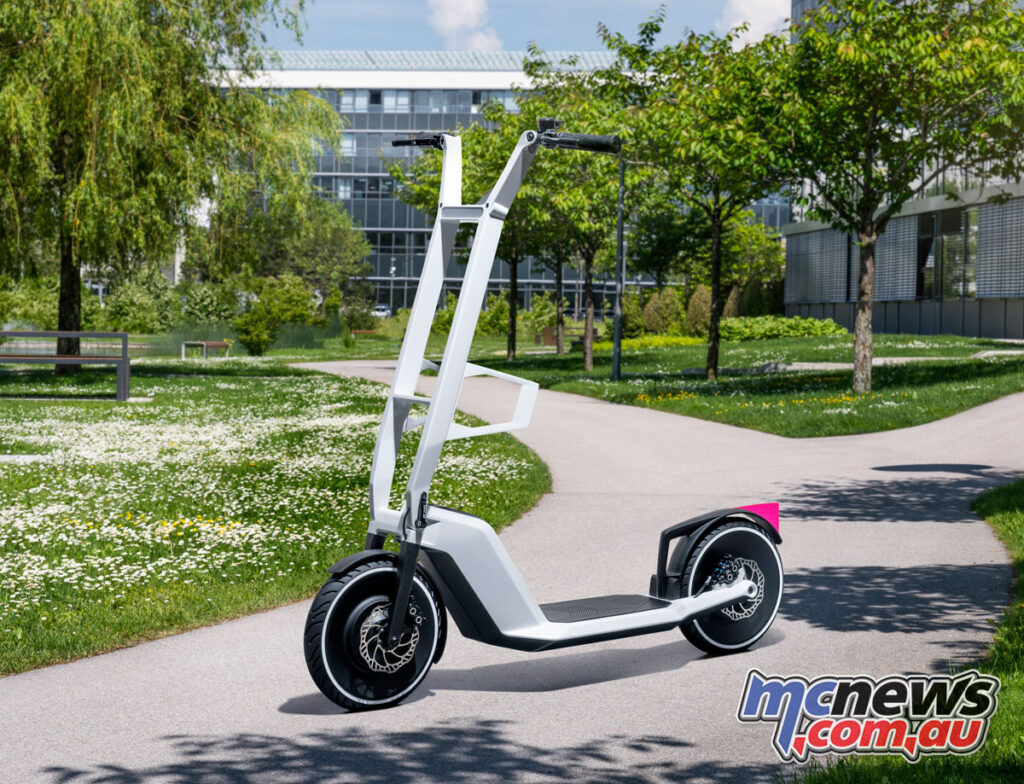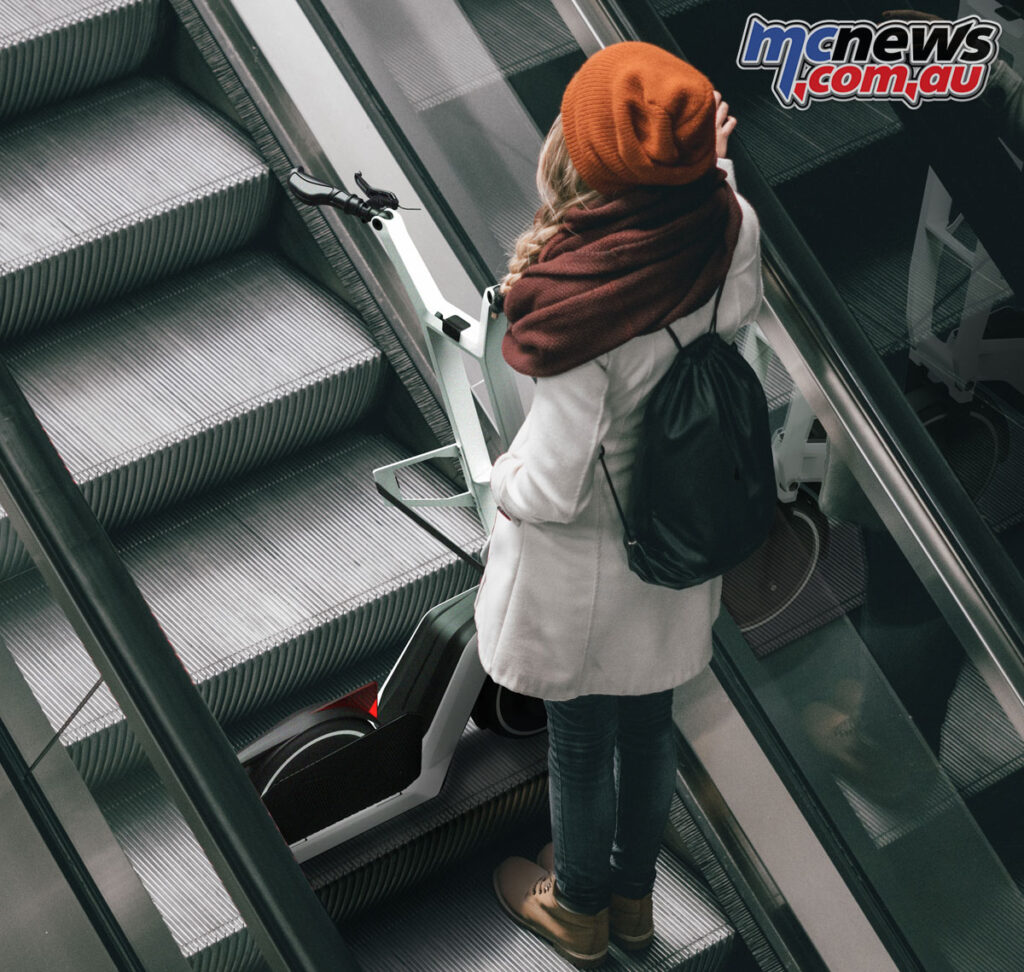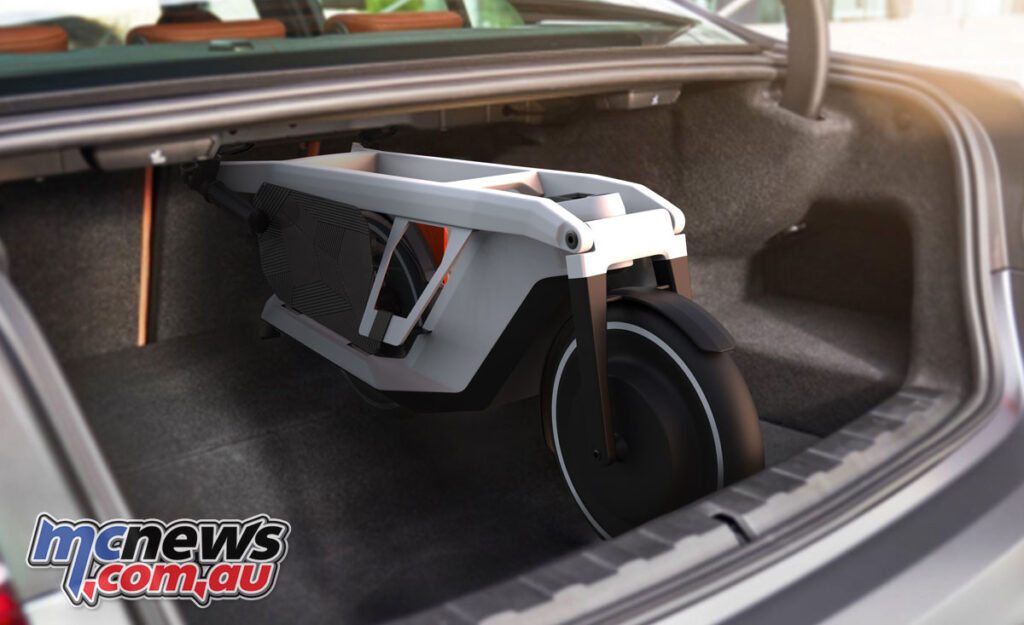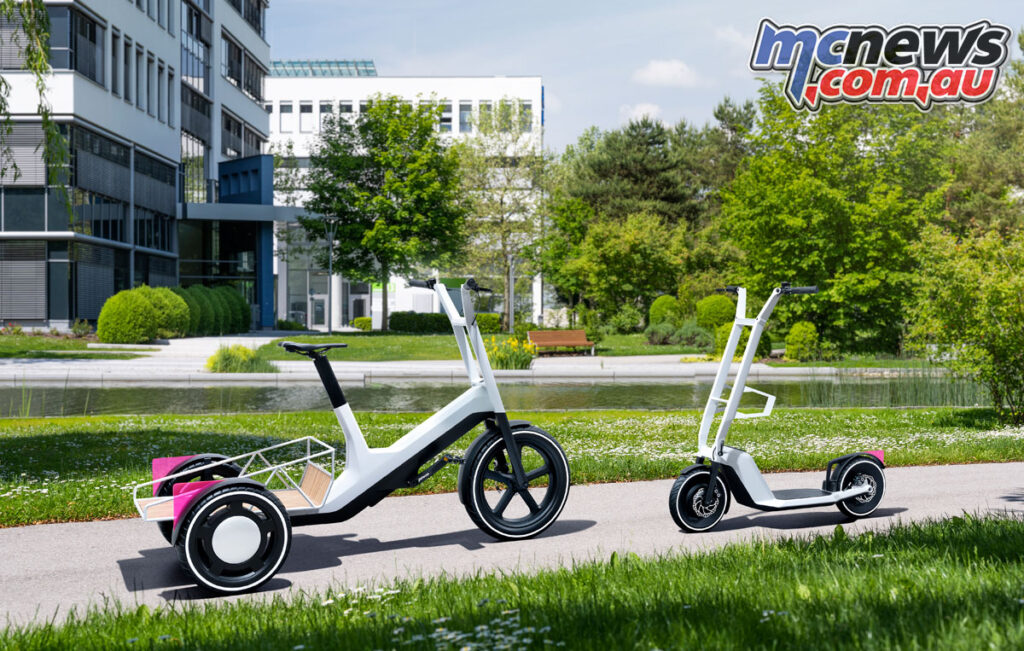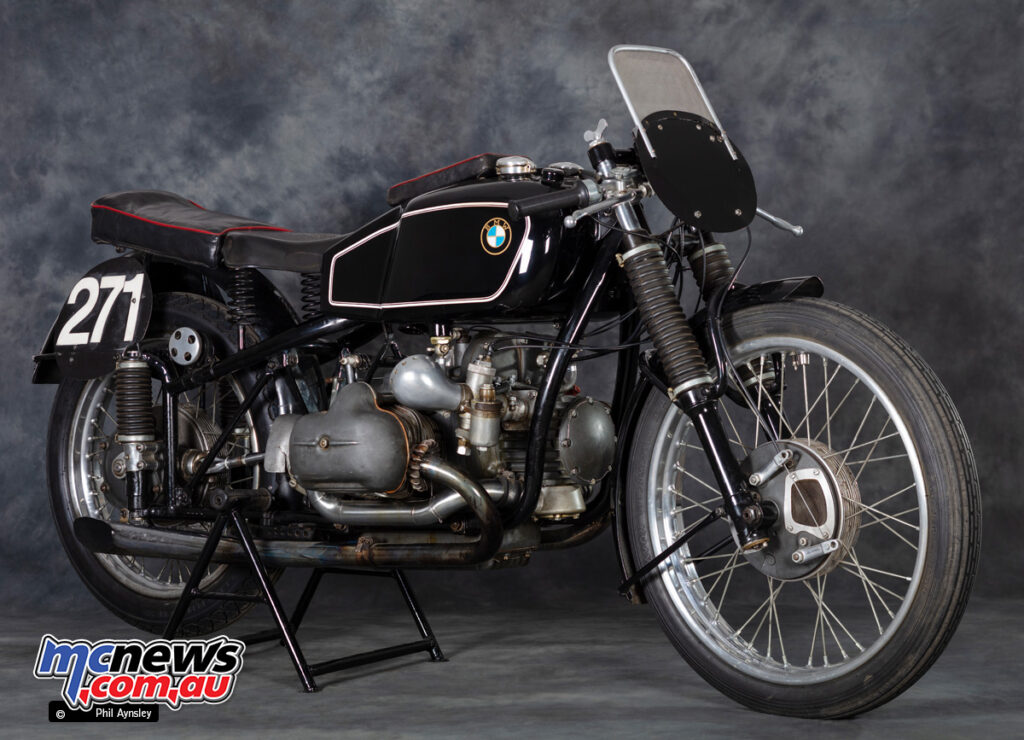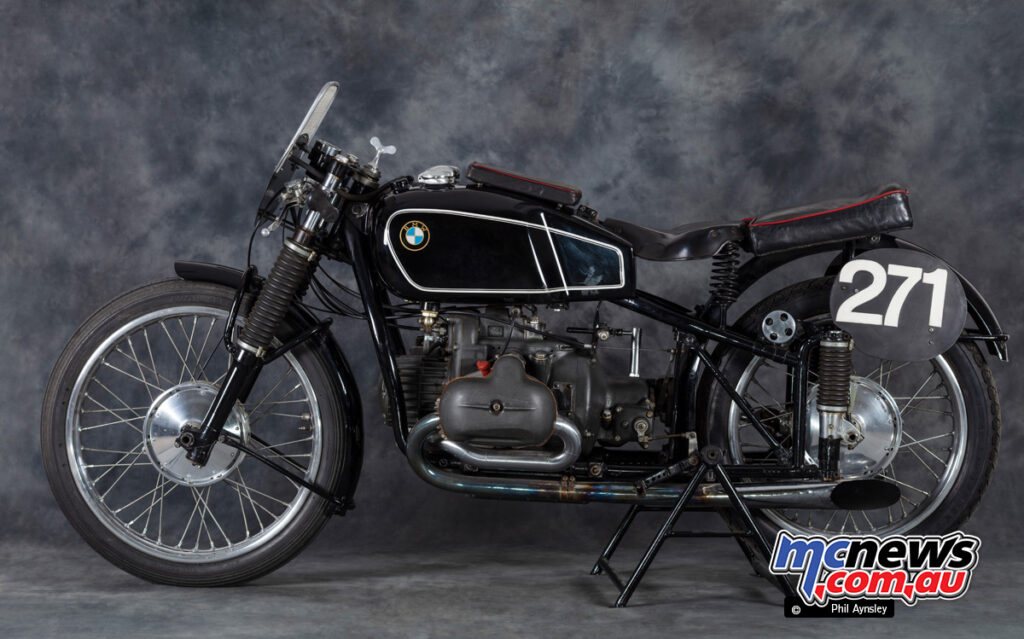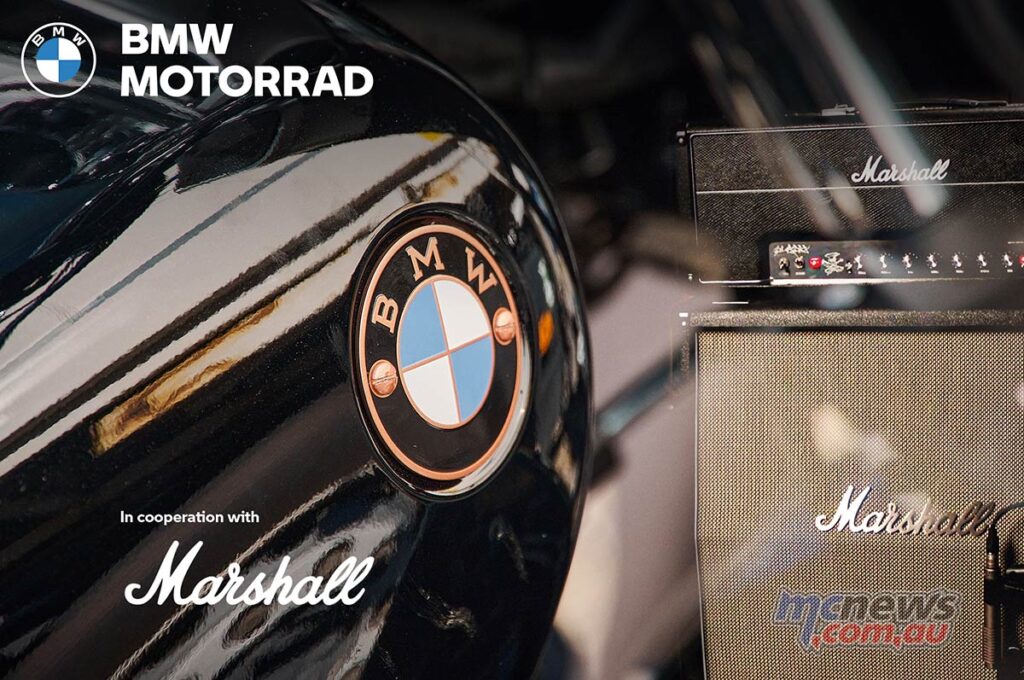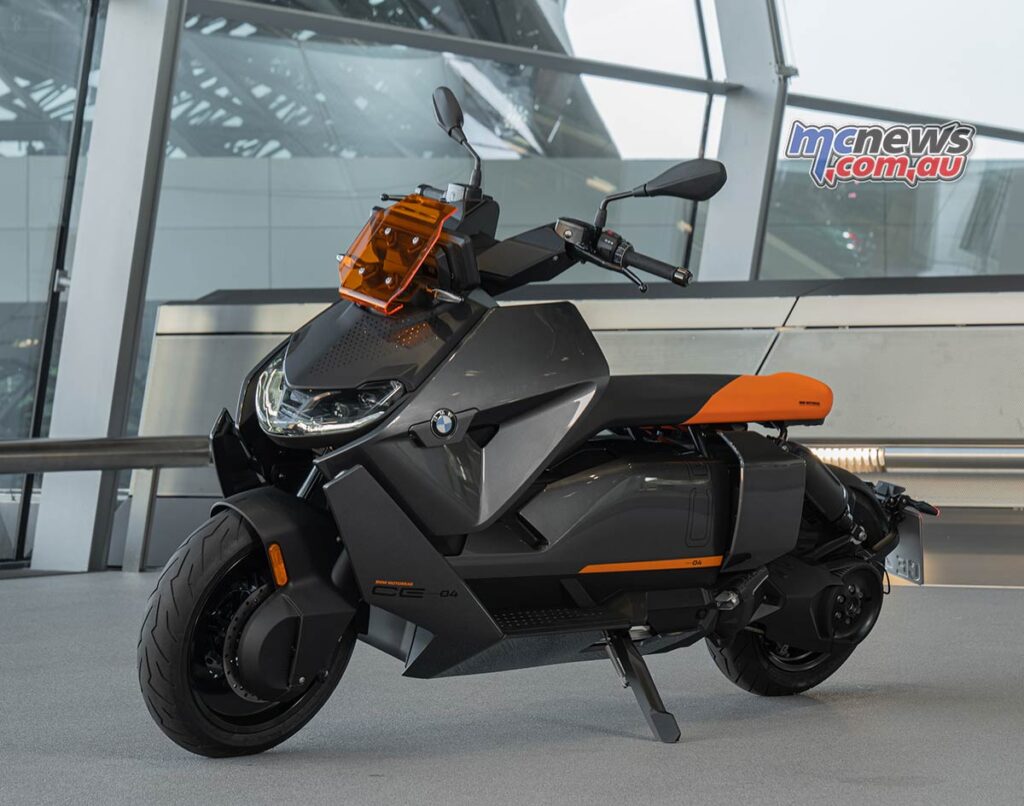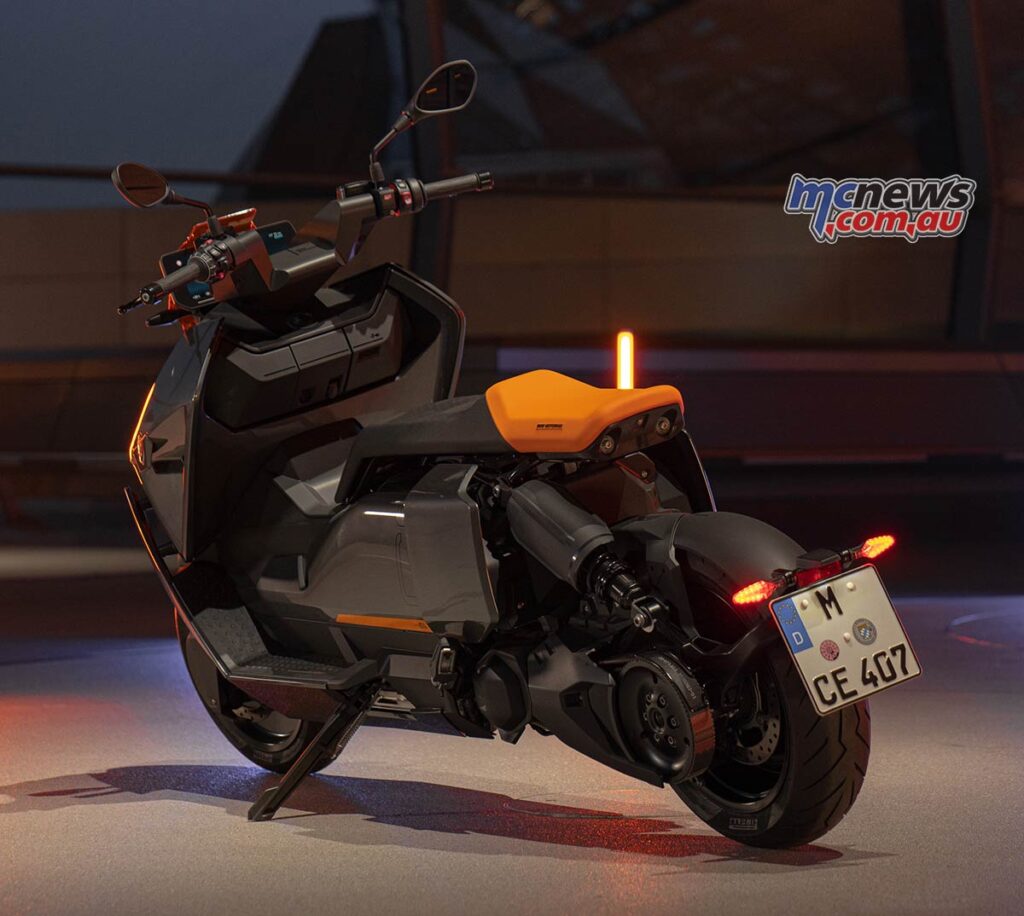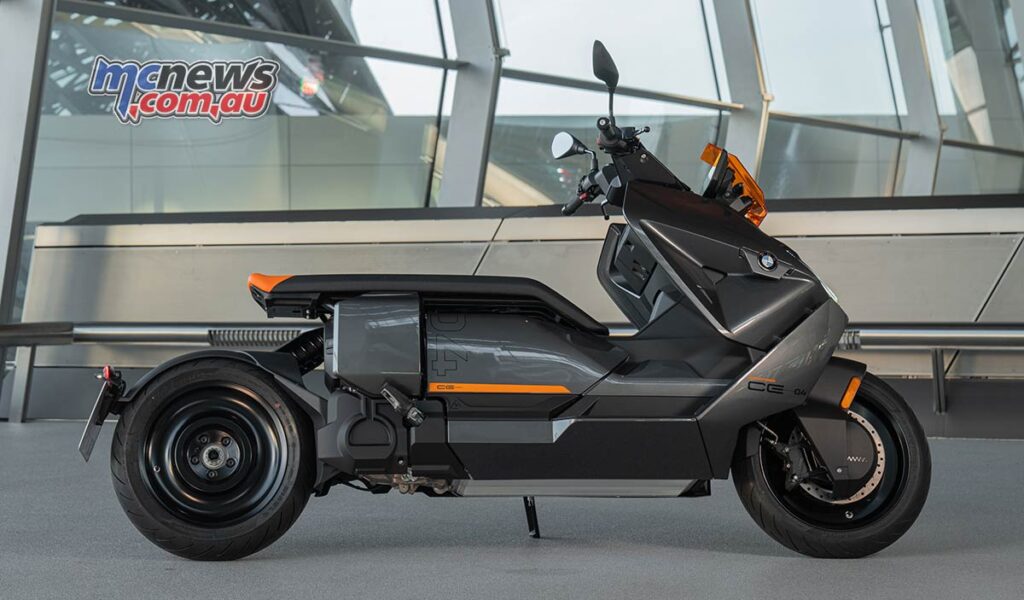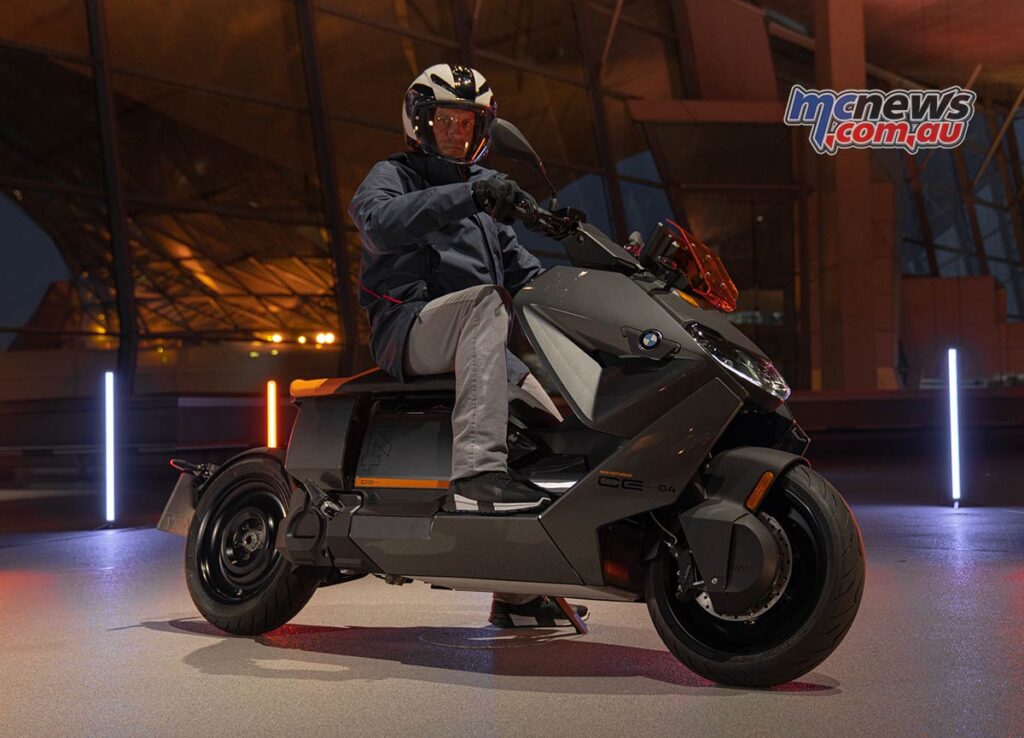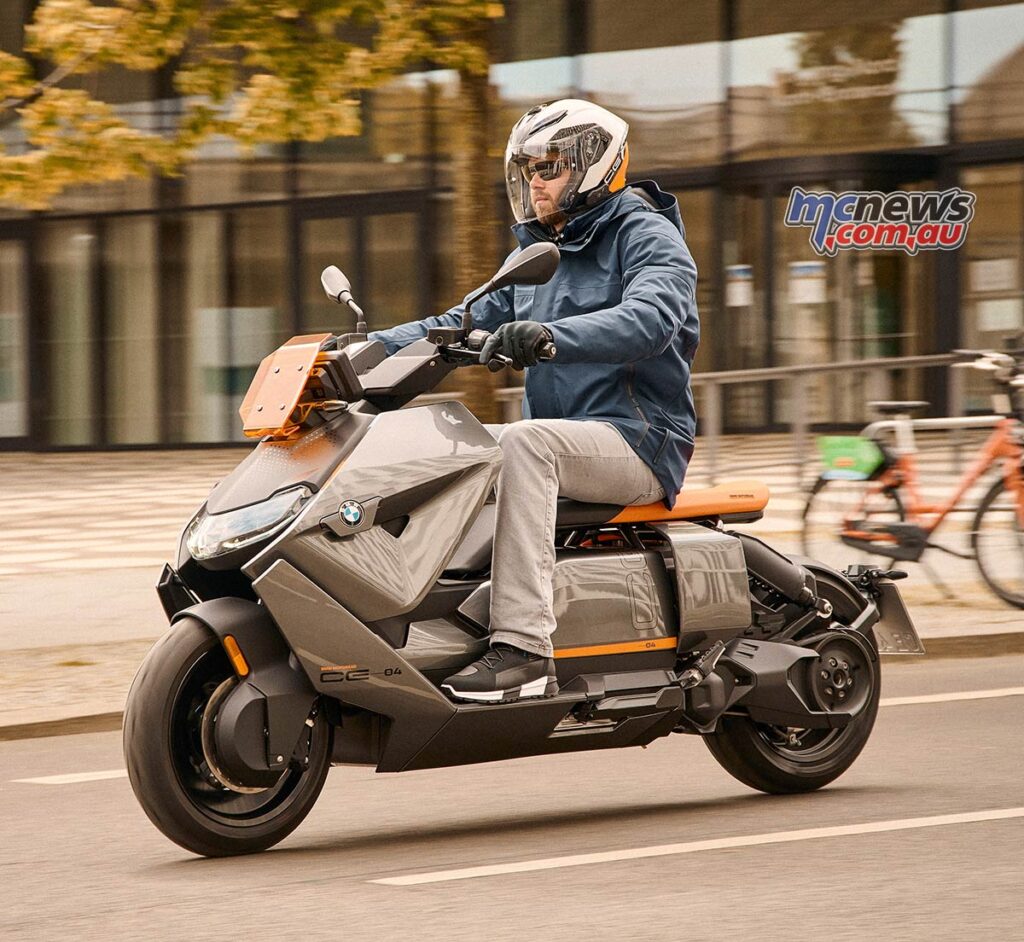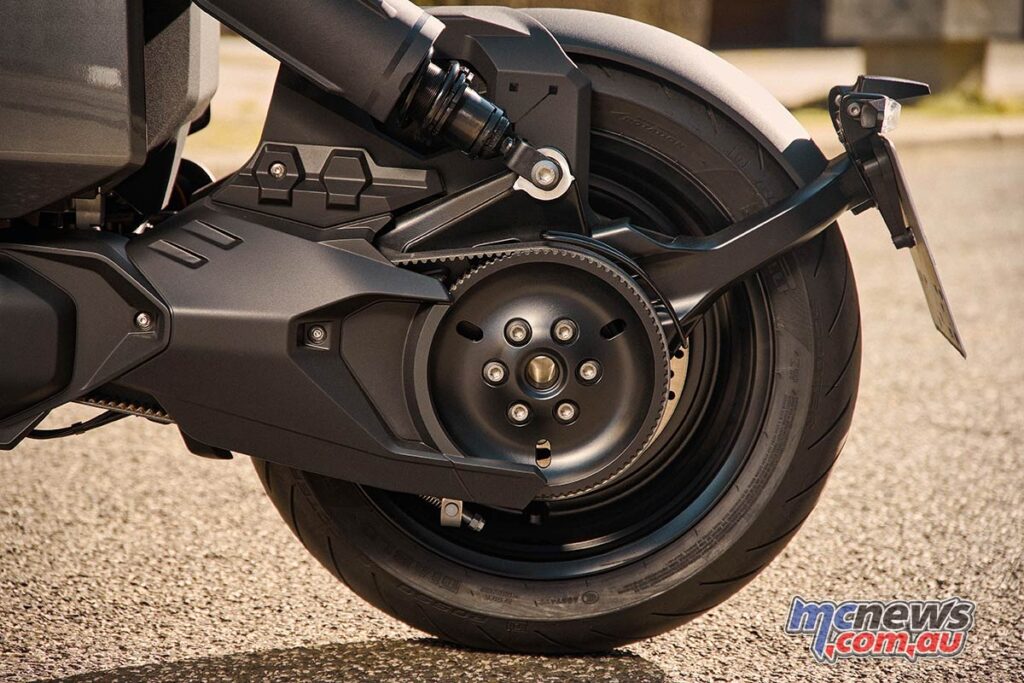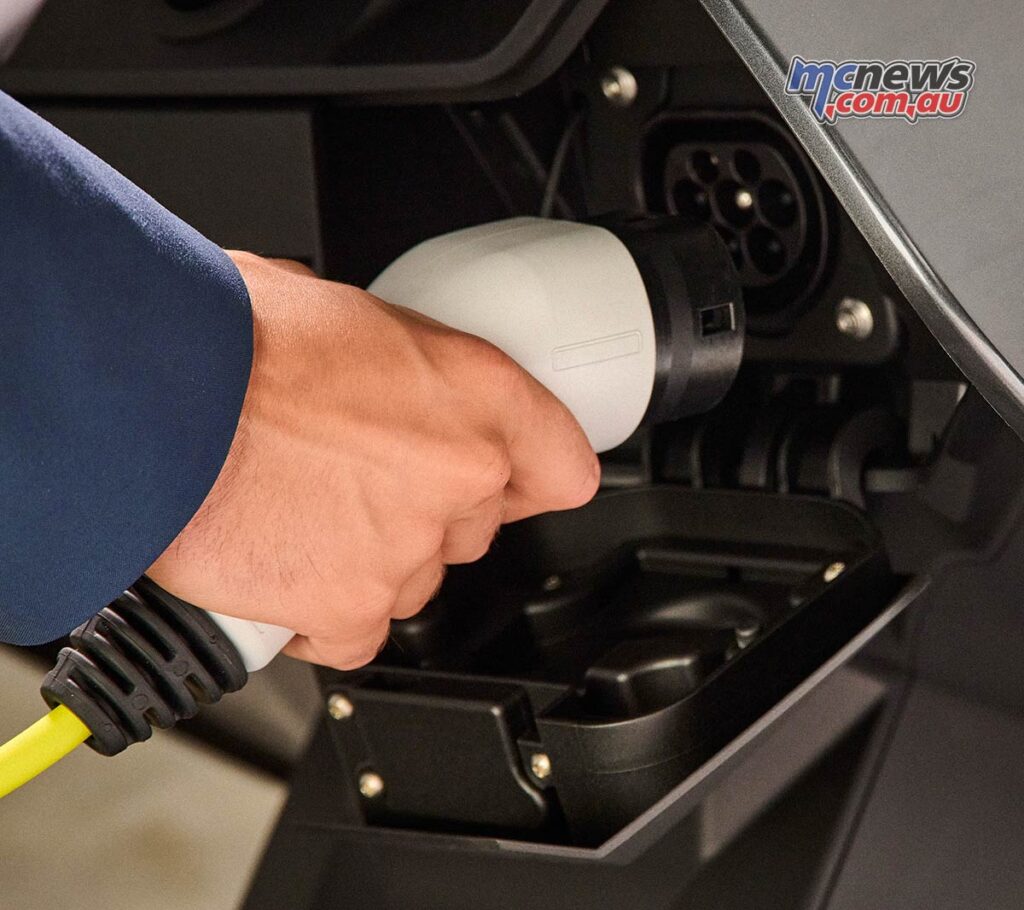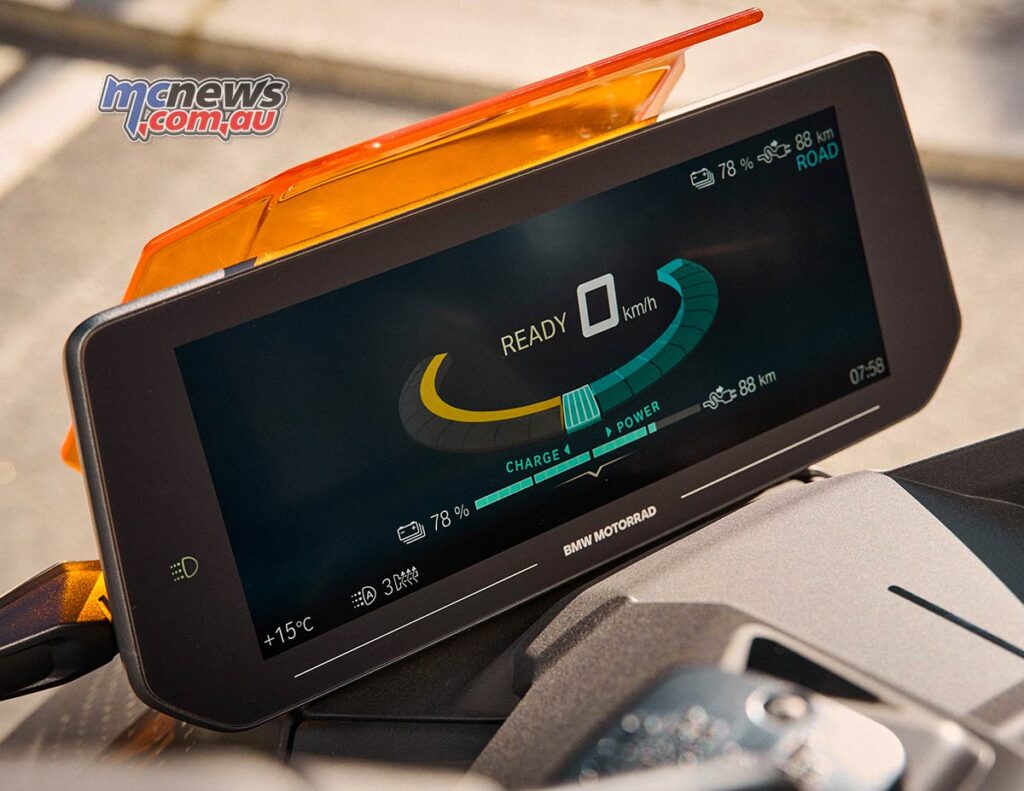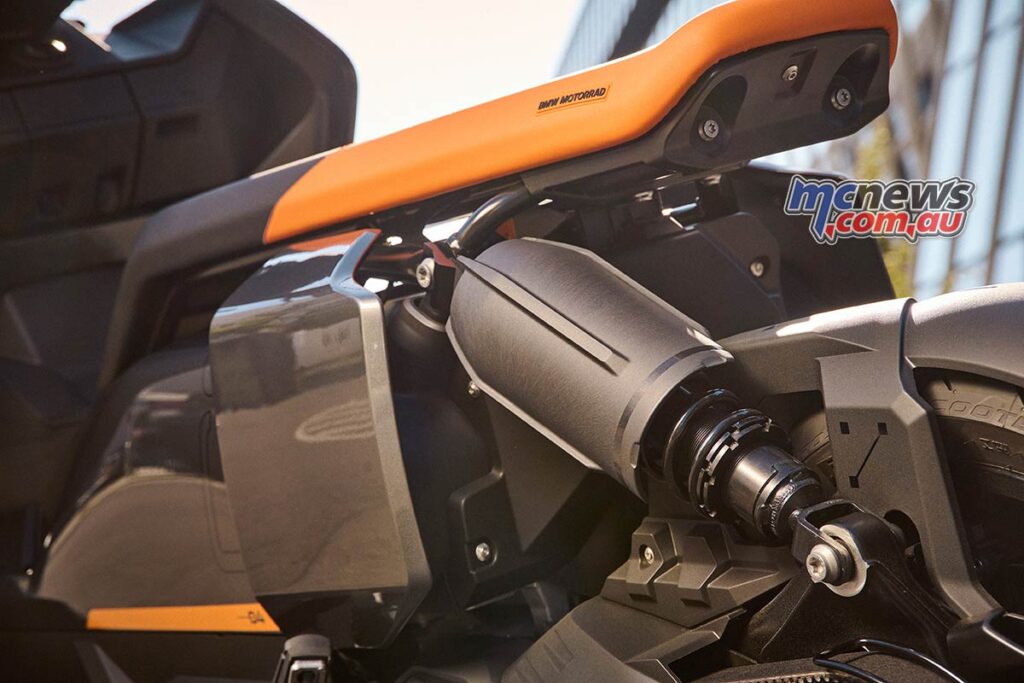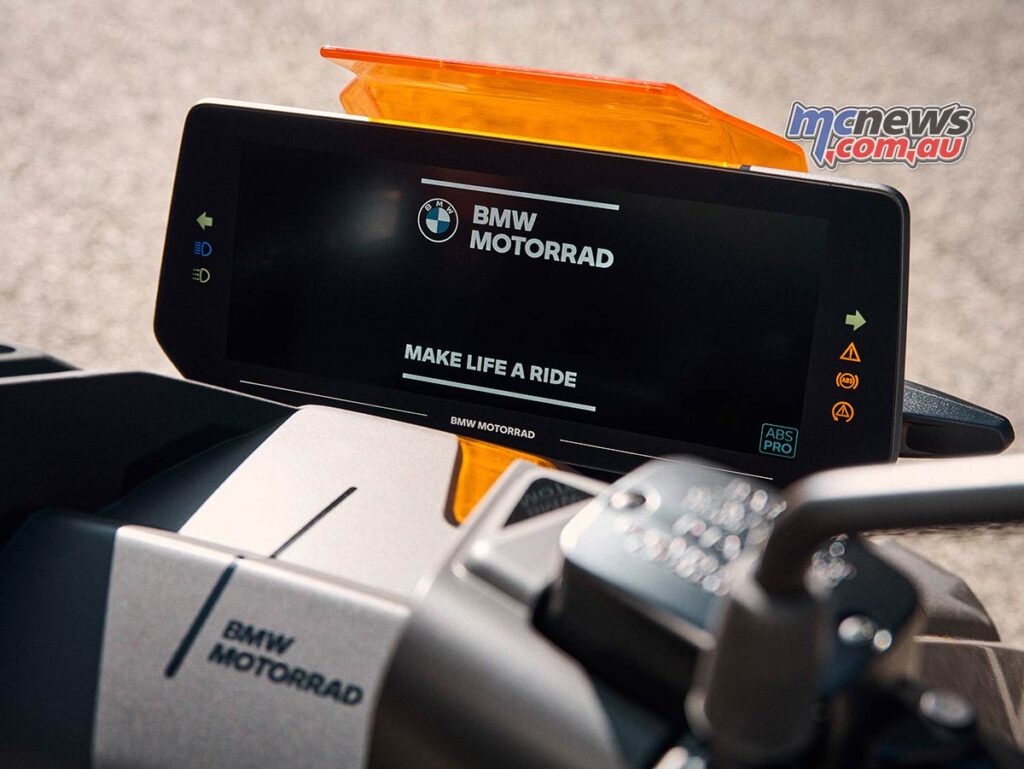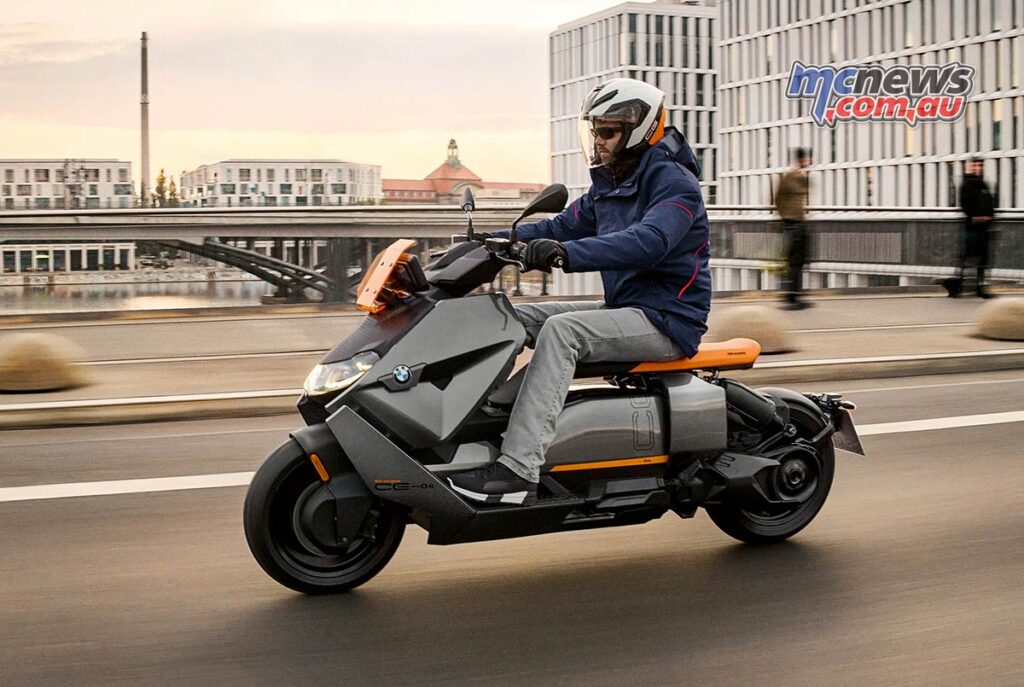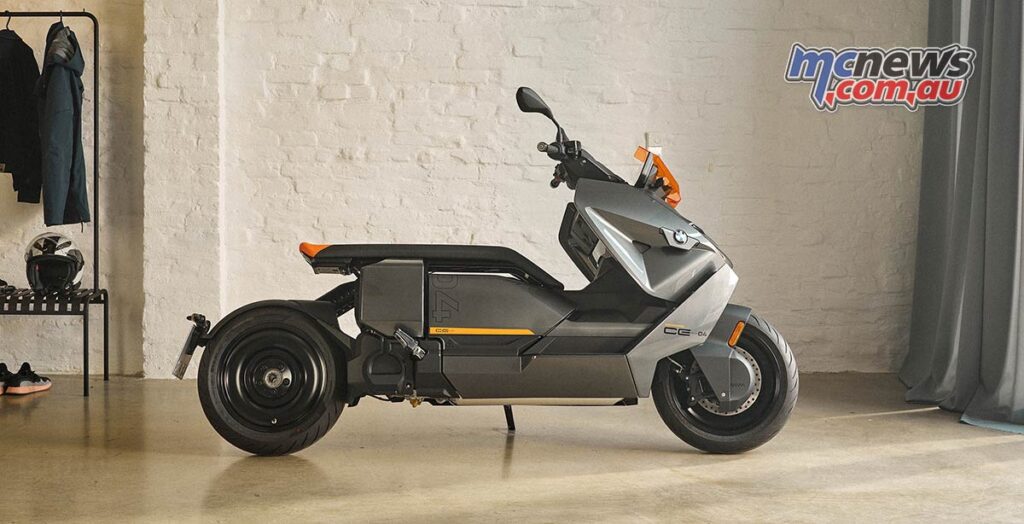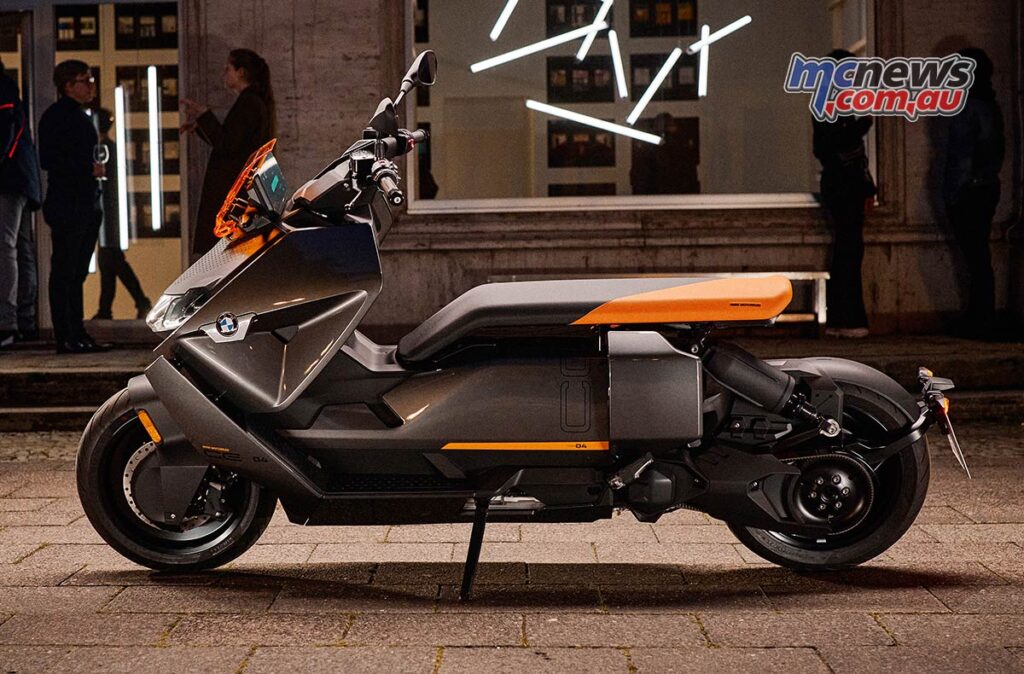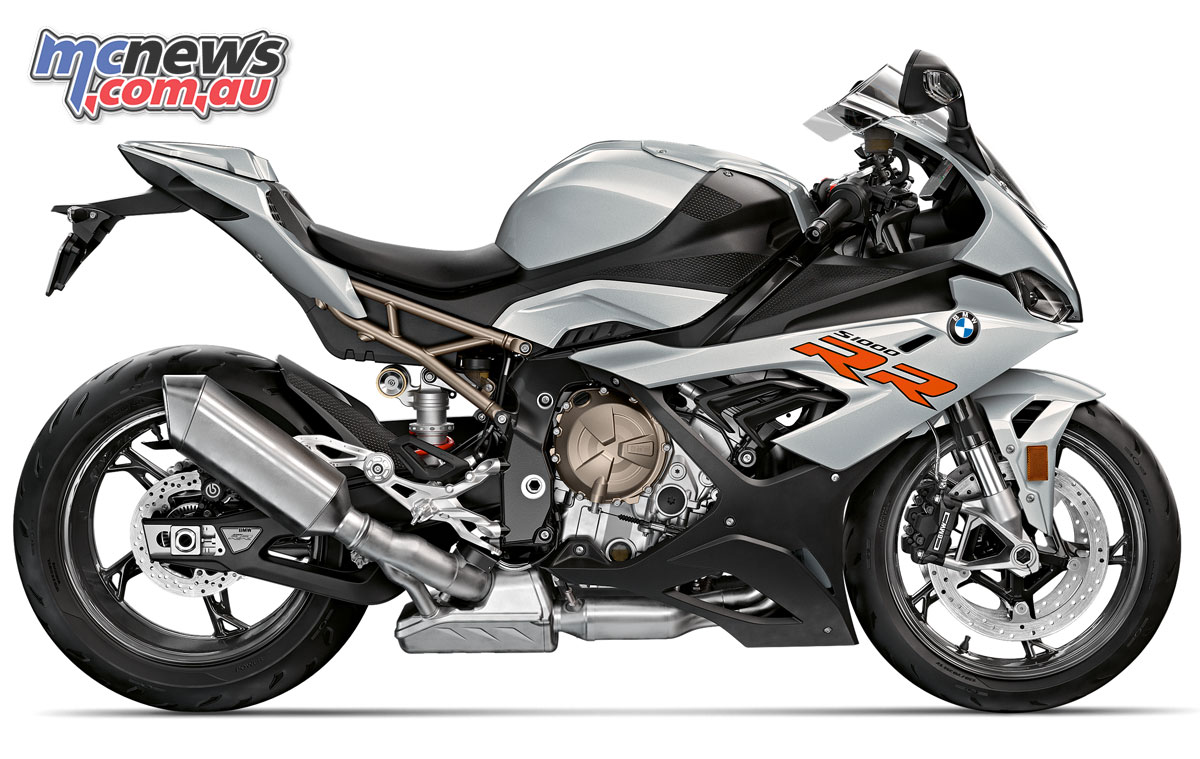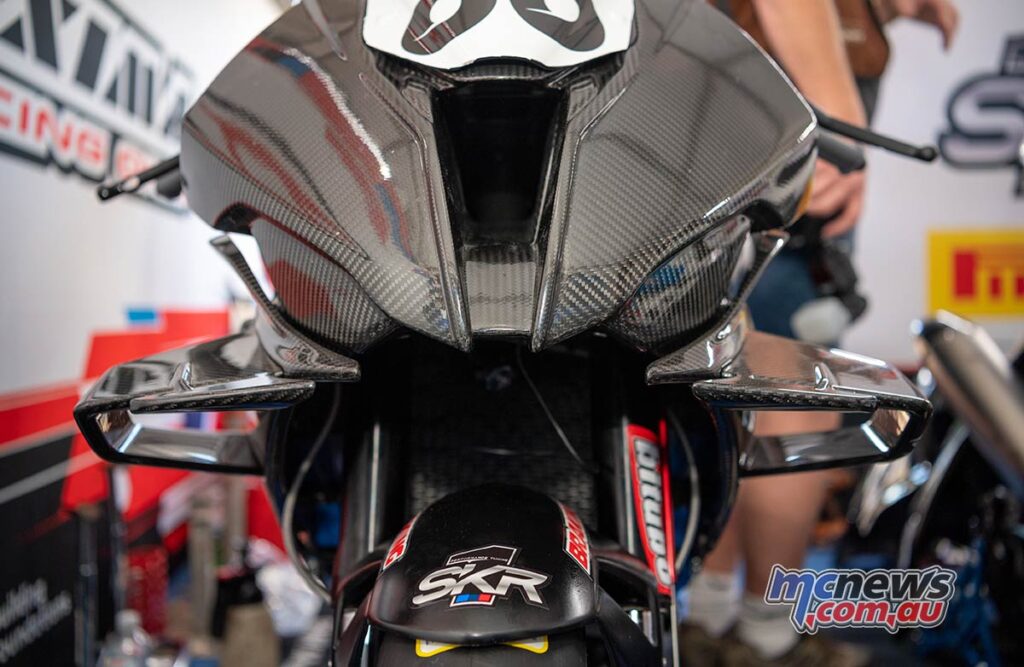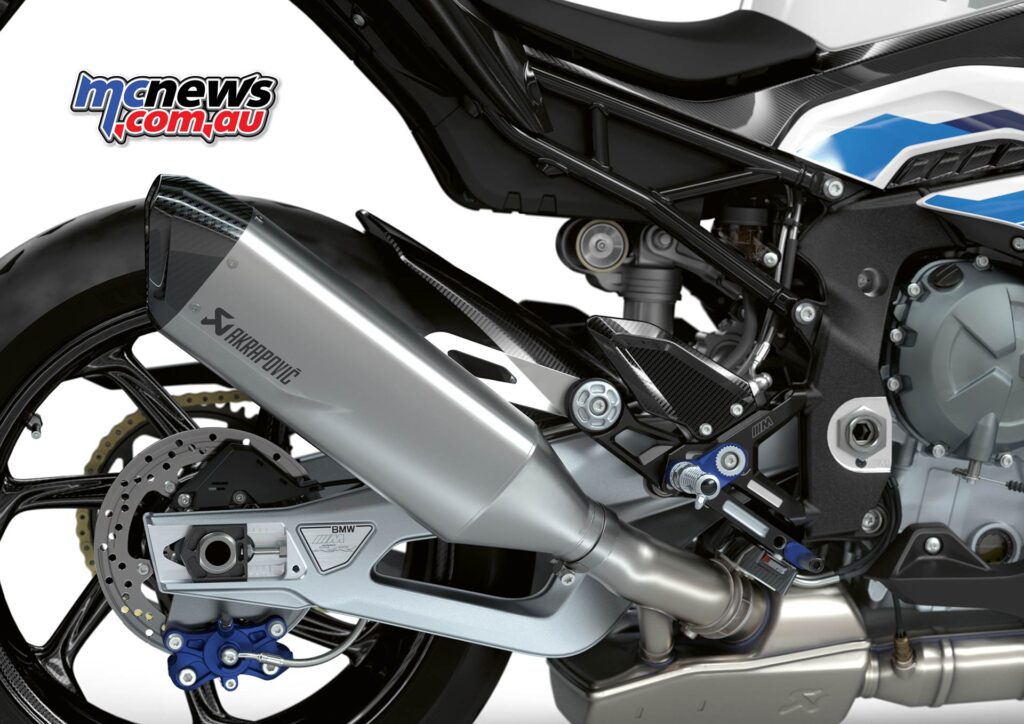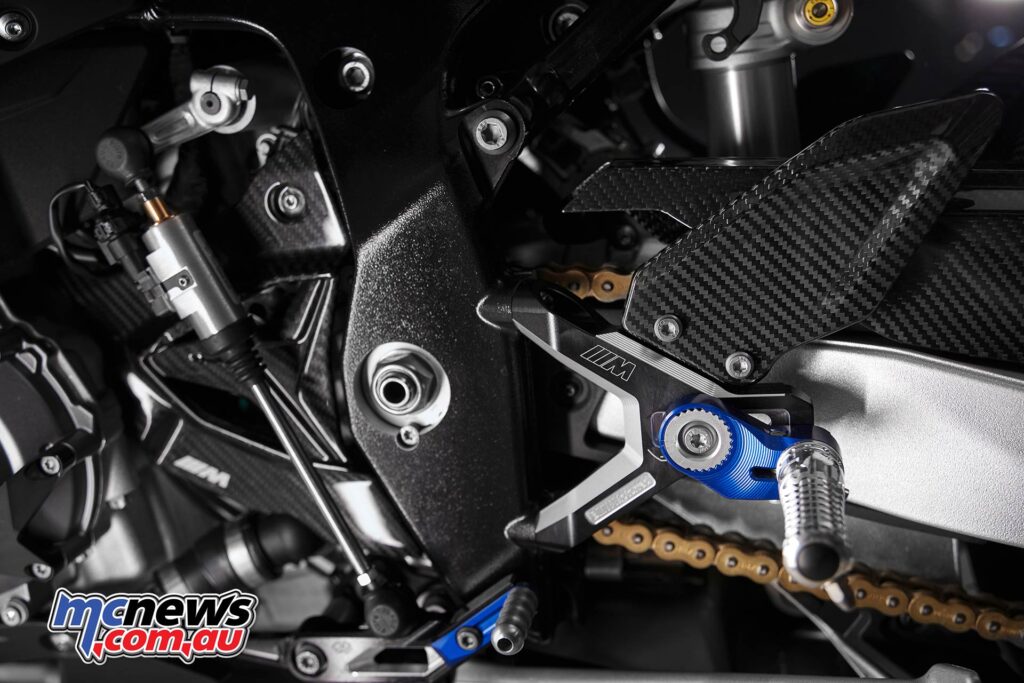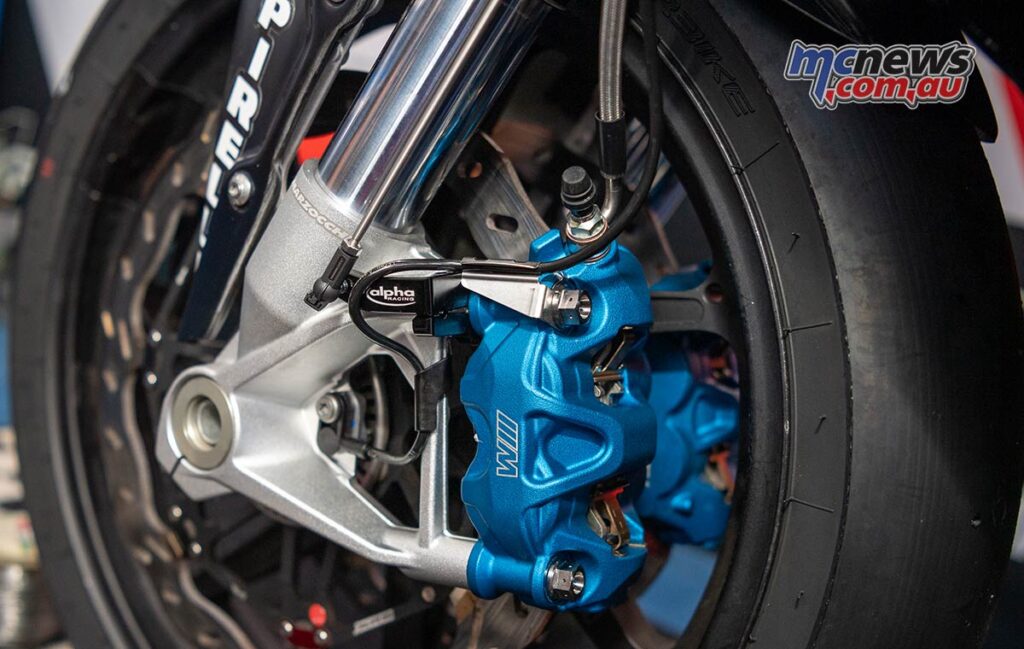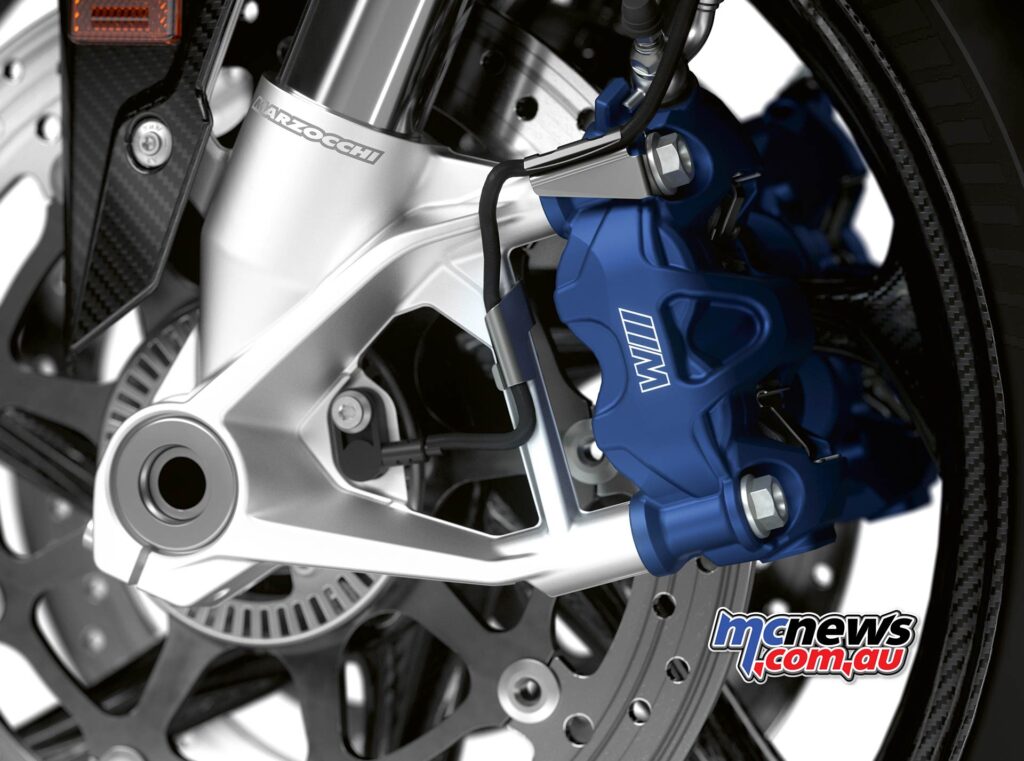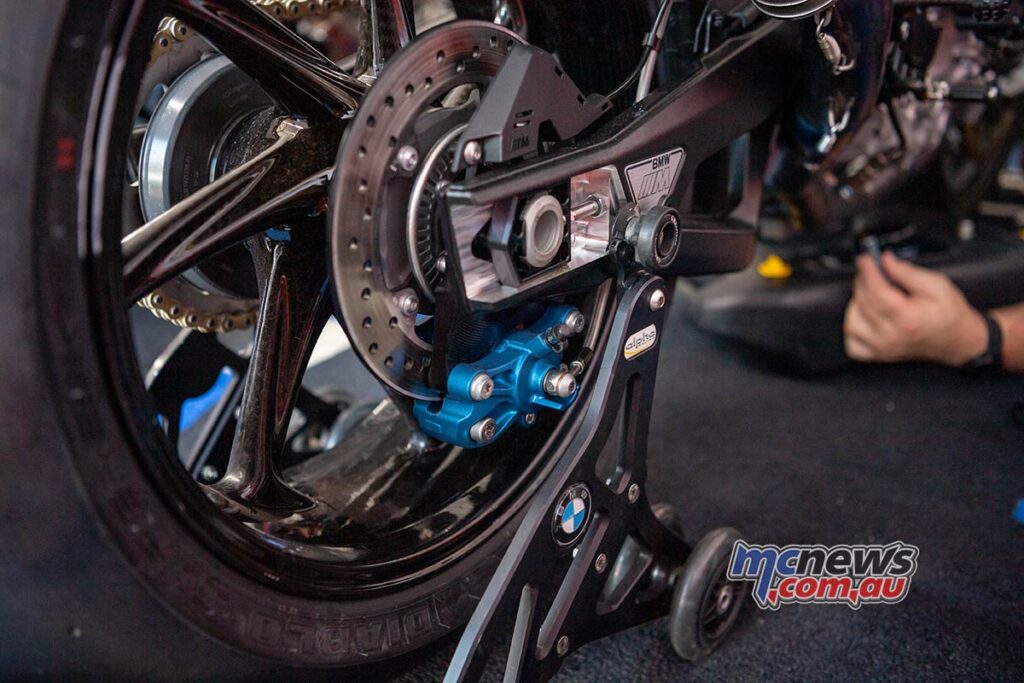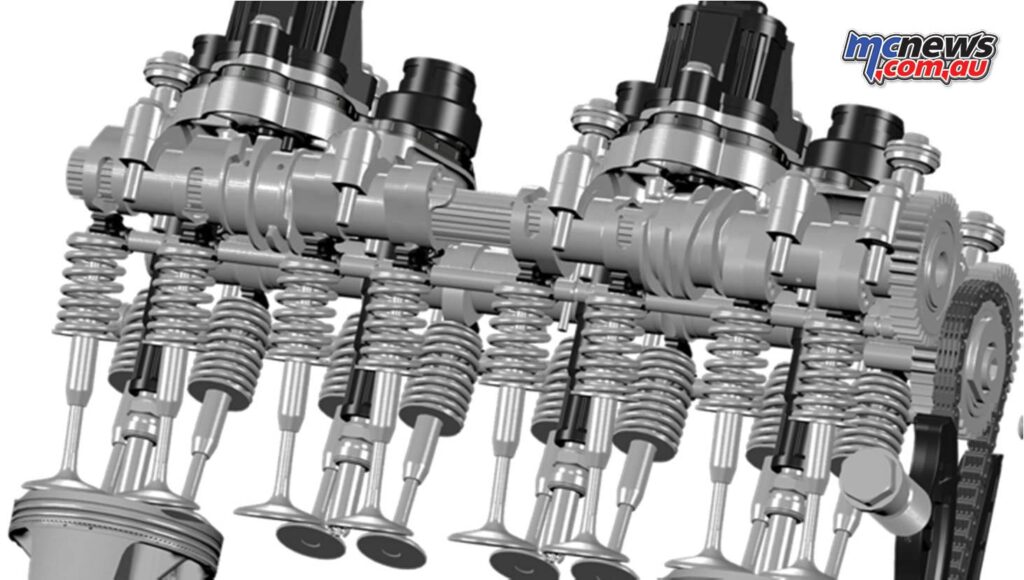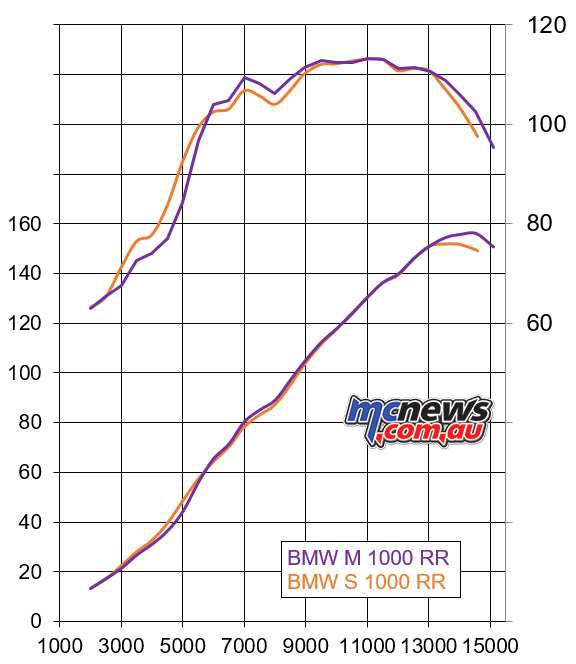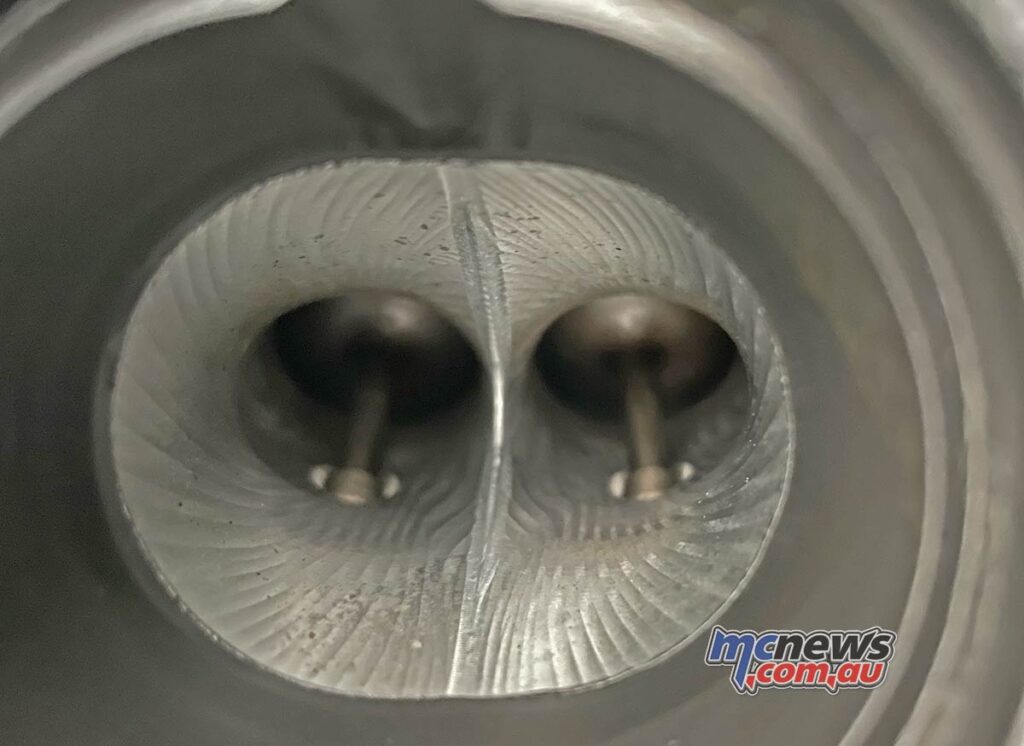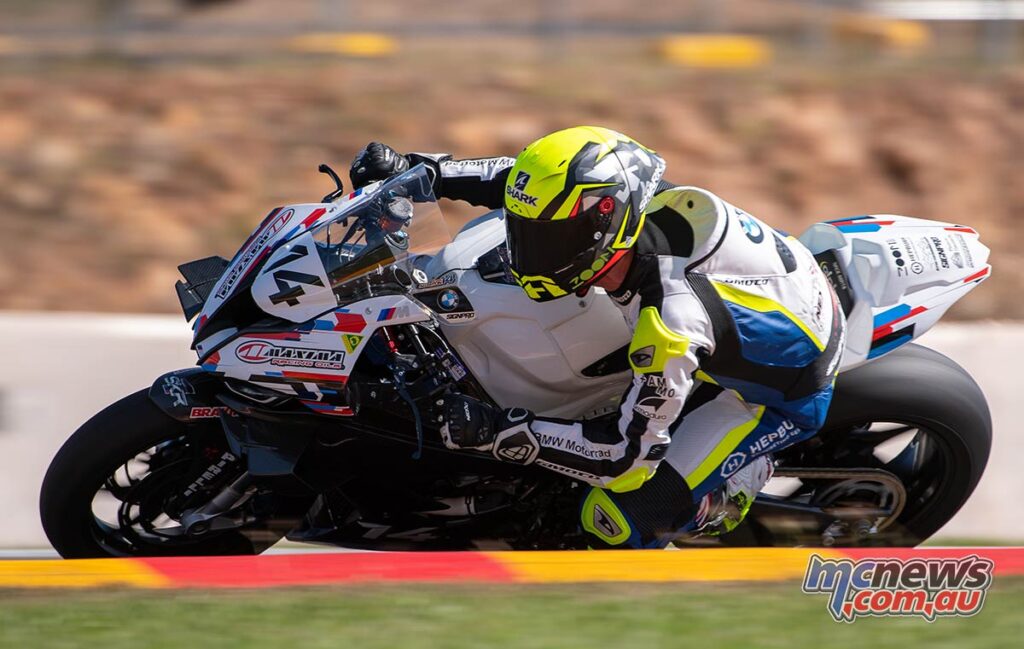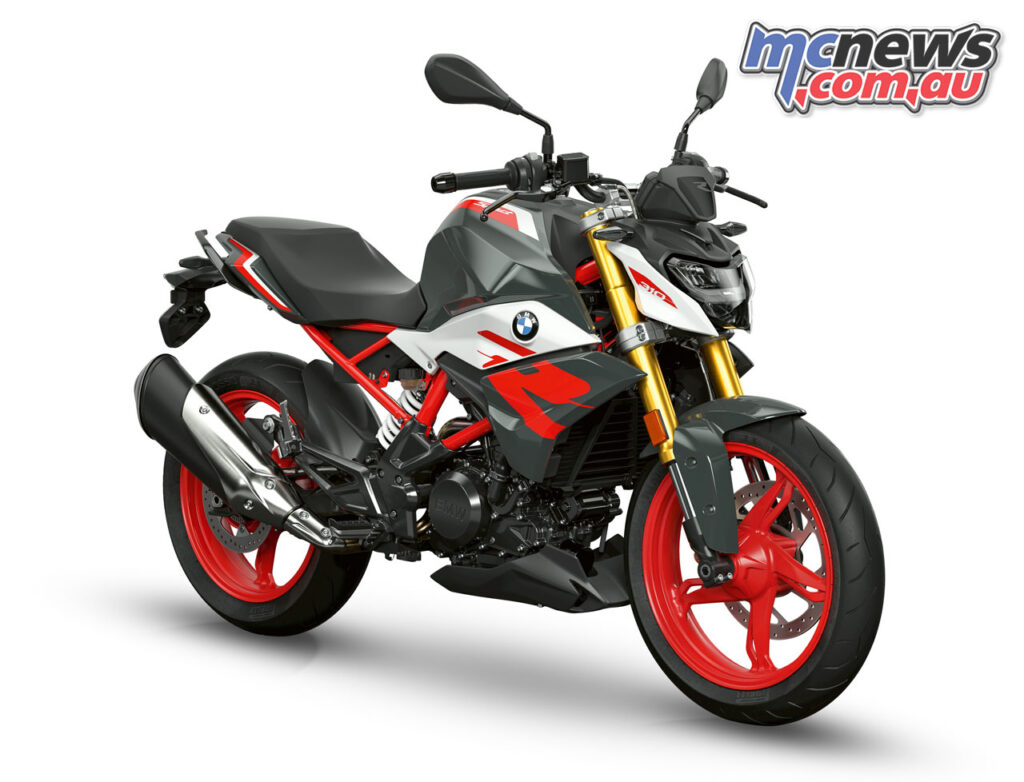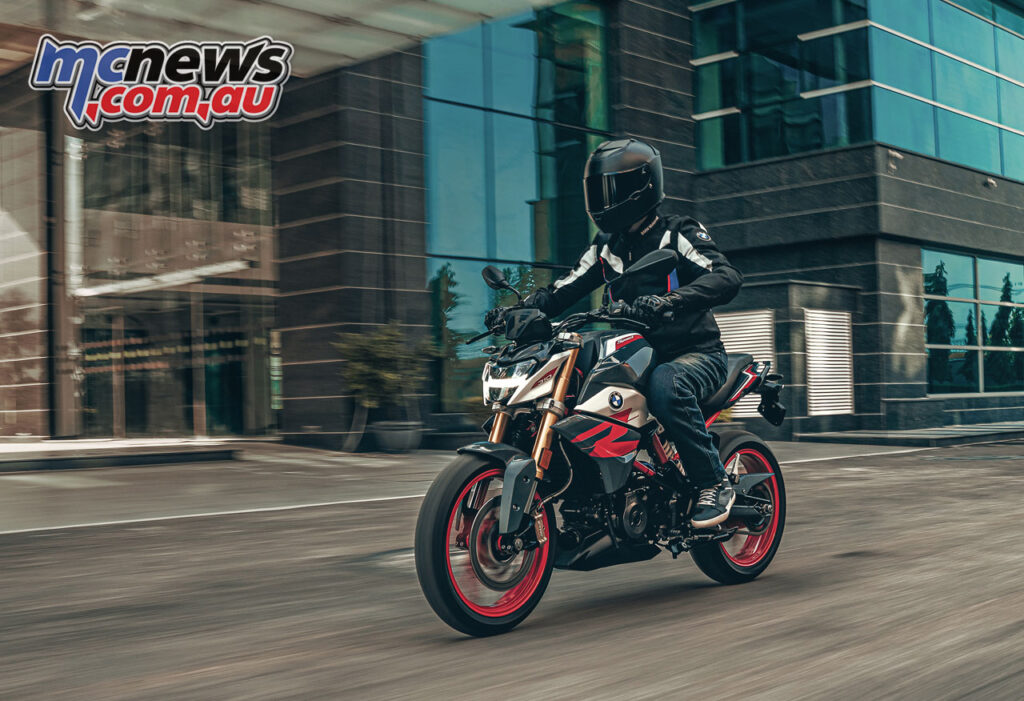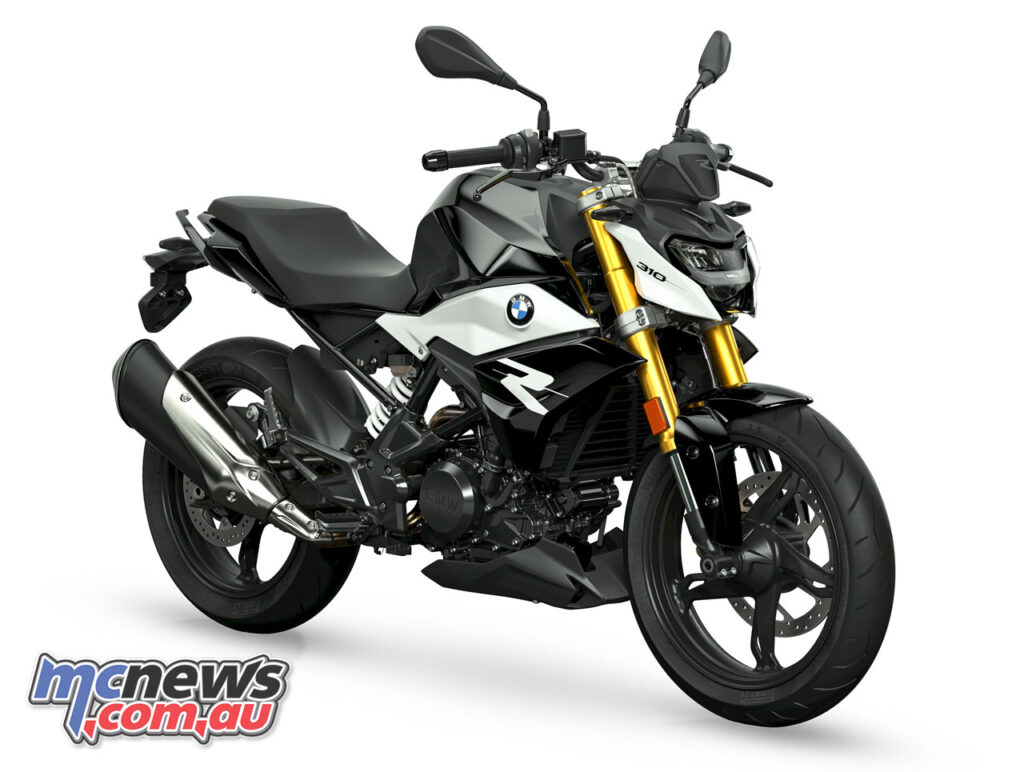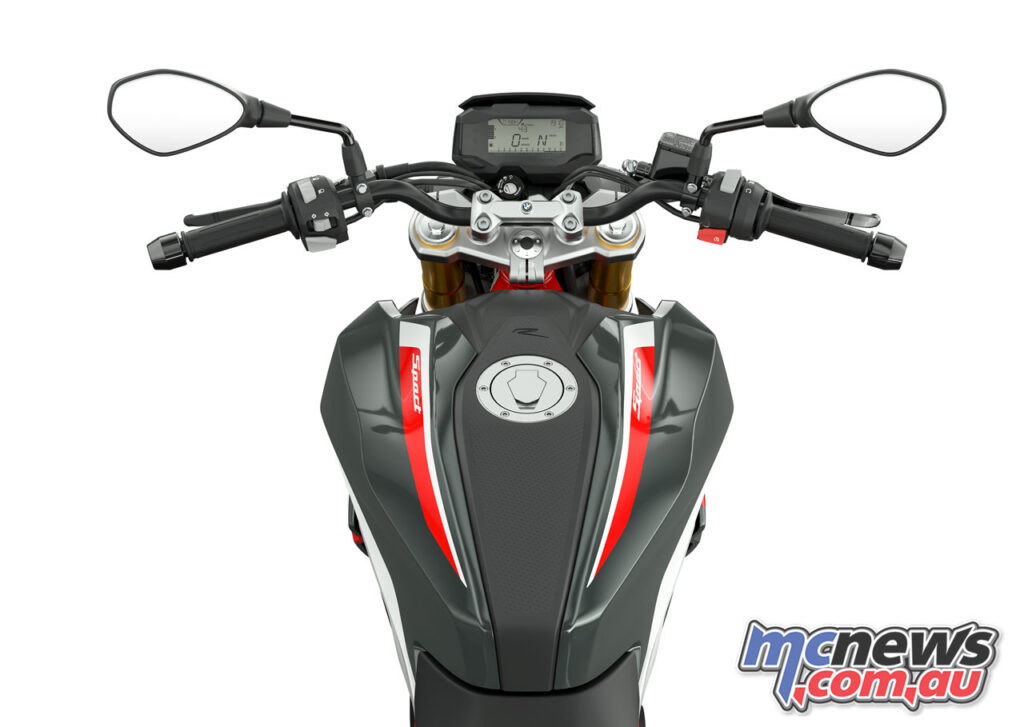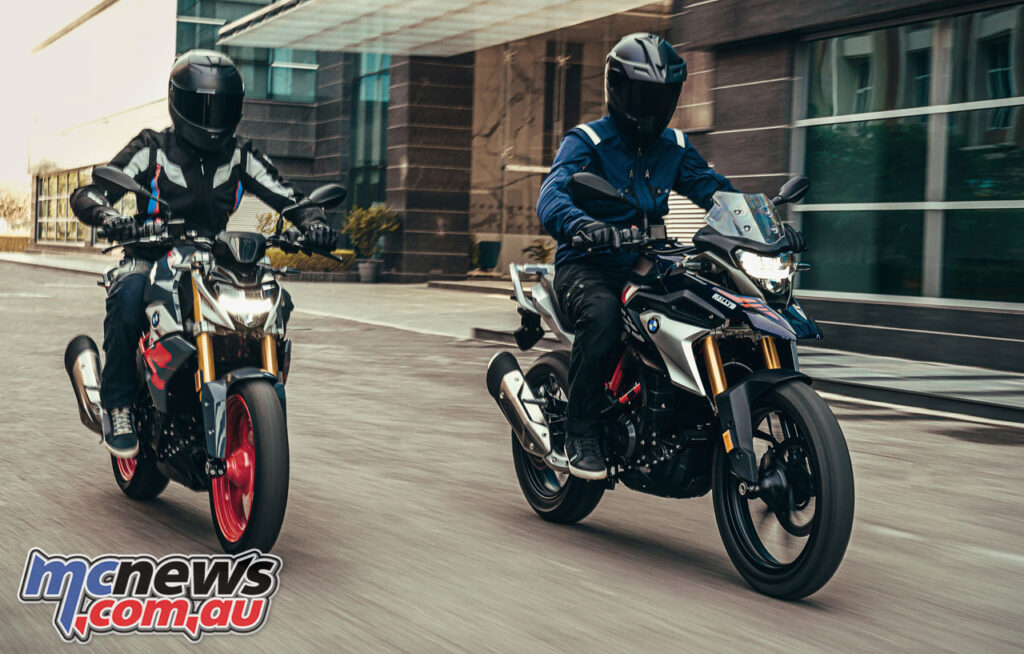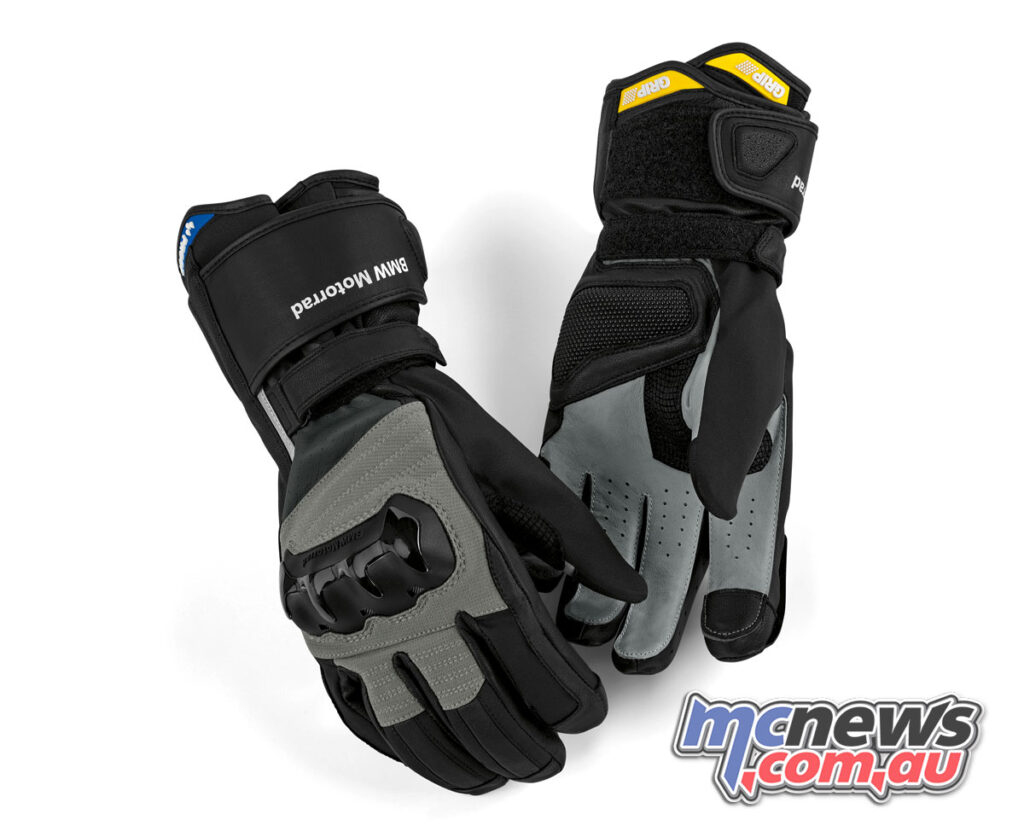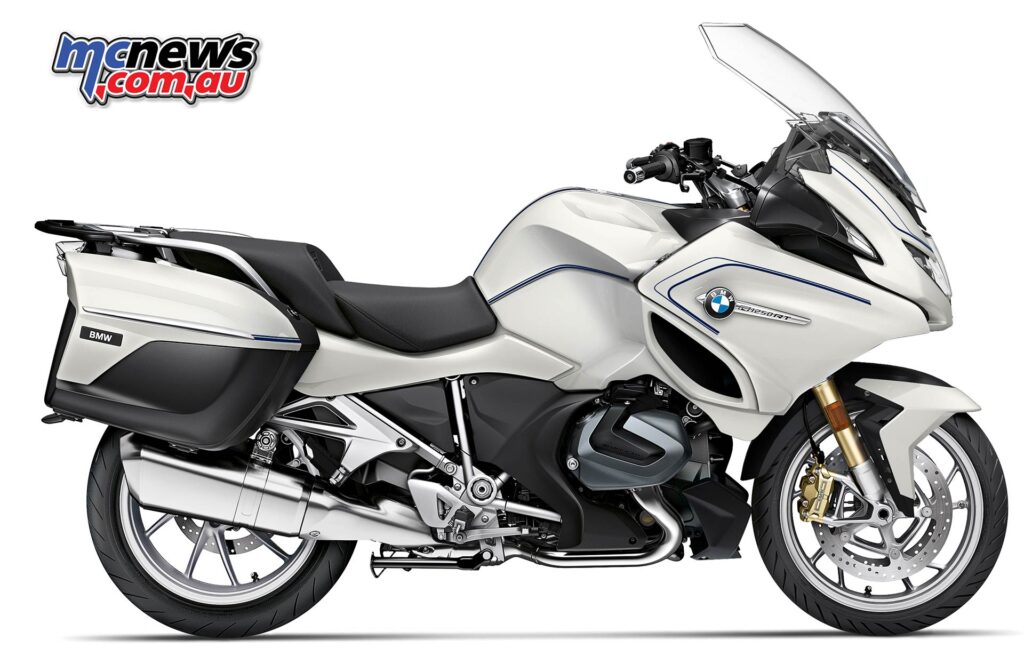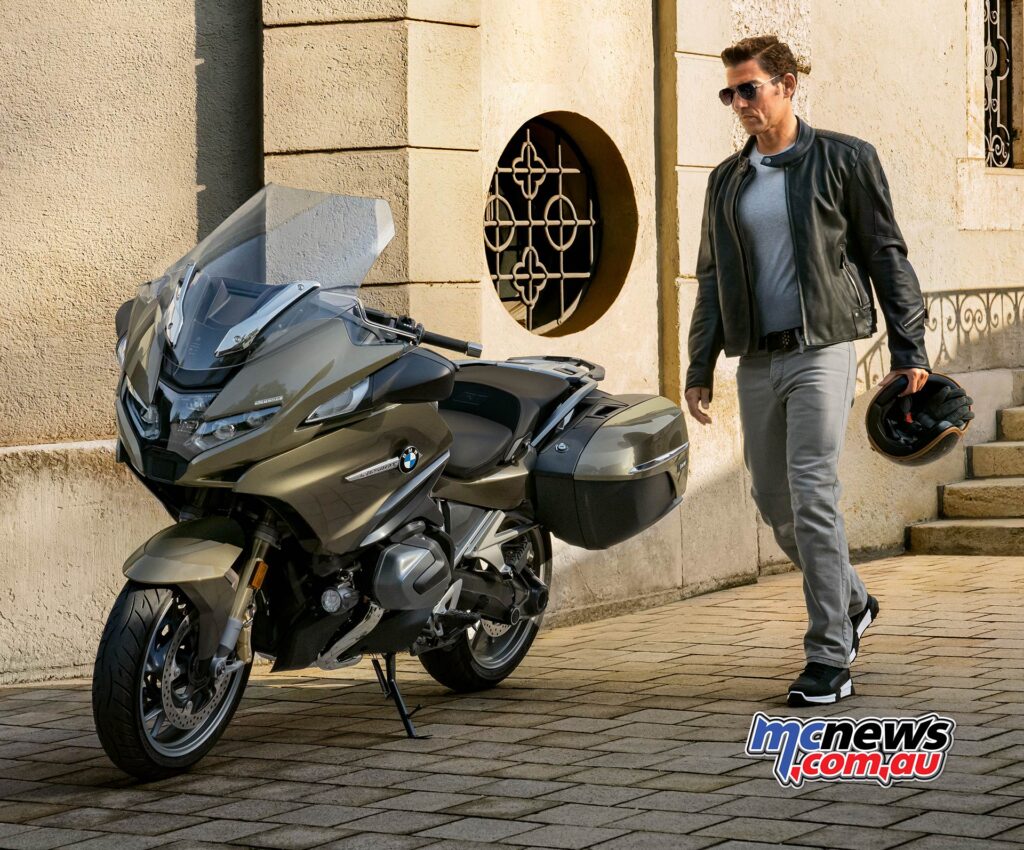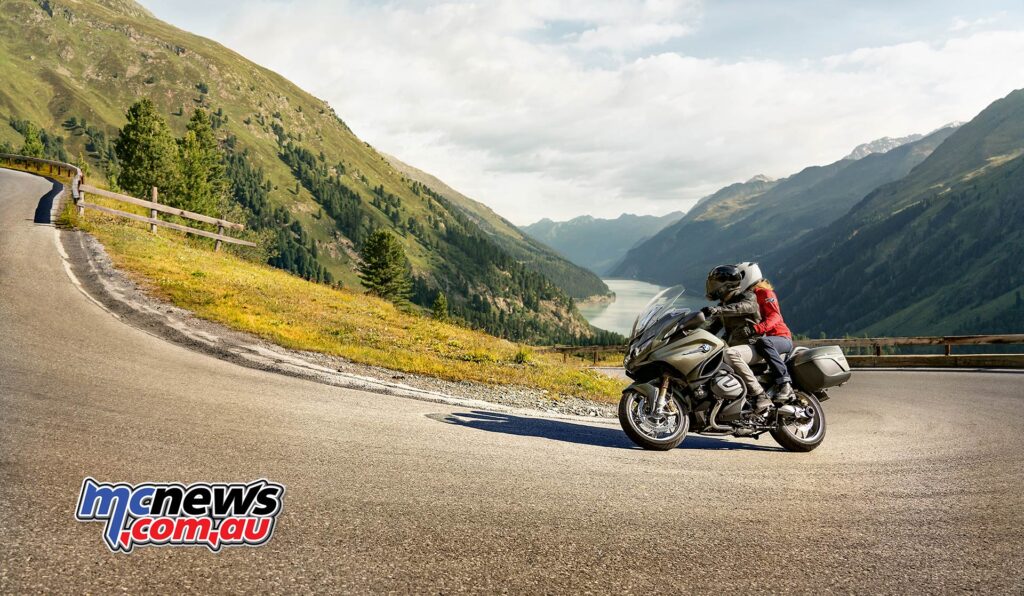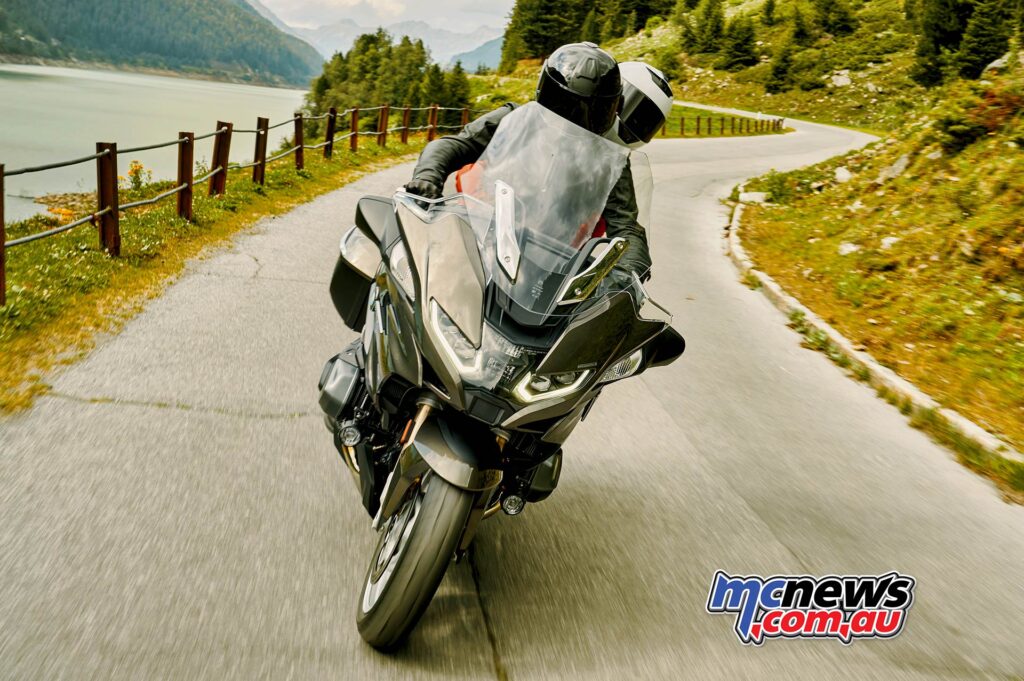BMW R 18 Transcontinental and R 18 B
It is fair to say that the first editions of the R 18 have not been quite the sales success that BMW had hoped for. You can’t really out-Harley, Harley-Davidson, but overnight BMW revealed the new up-spec touring versions of the R 18 that should provide much wider appeal.
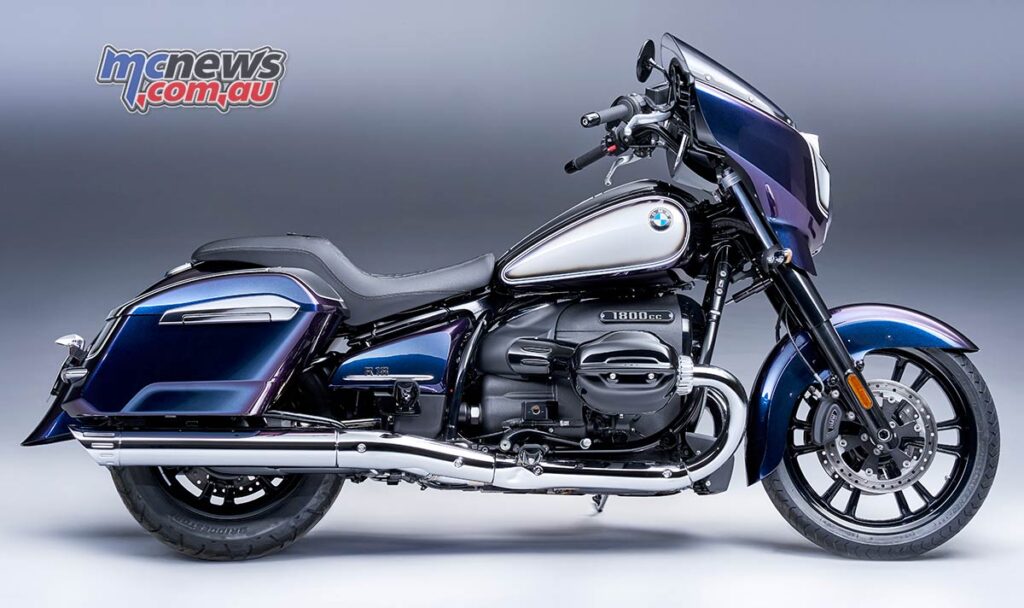
It is somewhat strange that BMW didn’t actually start the lineage of the new model here considering their proven reputation for comfortable long-range motorcycles fitted out with the latest and greatest technology in motorcycling. But in the new Transcontinental and R 18 B, BMW have put that experience to work to produce full-featured baggers that raise the game to a higher level with big fuel tanks, long travel suspension, great comfort and a comprehensive suite of both safety aids and infotainment. The new models are schedules to arrive in Australia this August and will be priced from $39,310* for R 18 B, and $41,675* for R 18 Transcontinental.
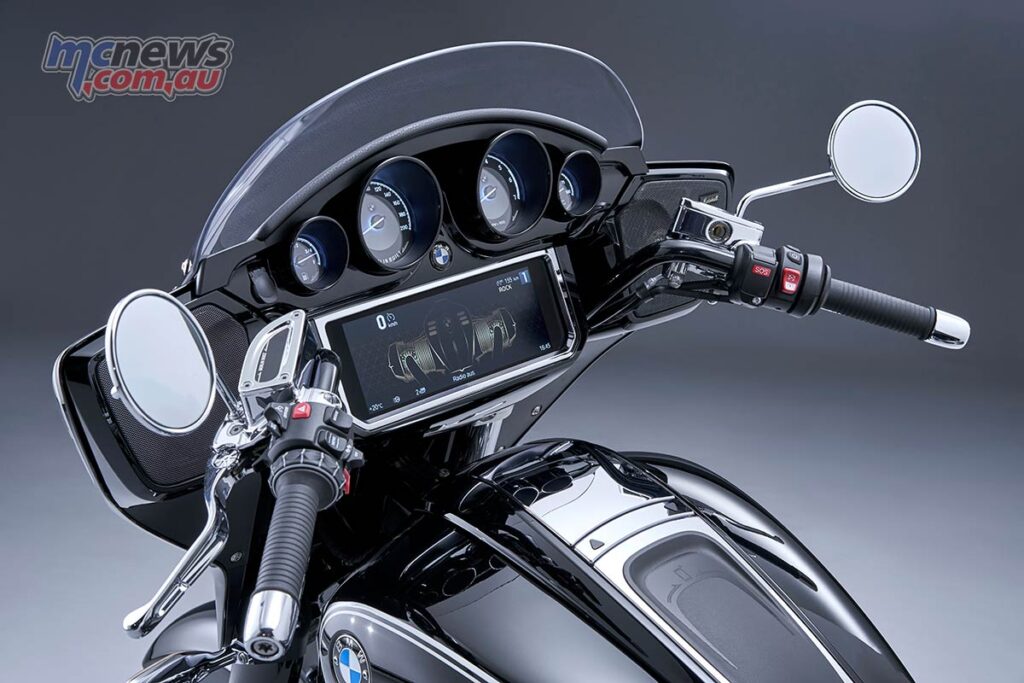
In the R 18 B we have a traditional looking bagger akin to something like Harley’s popular Street Glide. While with the Transcontinental we have the burger with the lot full dresser rival to Harley’s Ultra. Both those models sell very well here in Australia for Harley and these new BMW models should certainly give them some very serious competition.
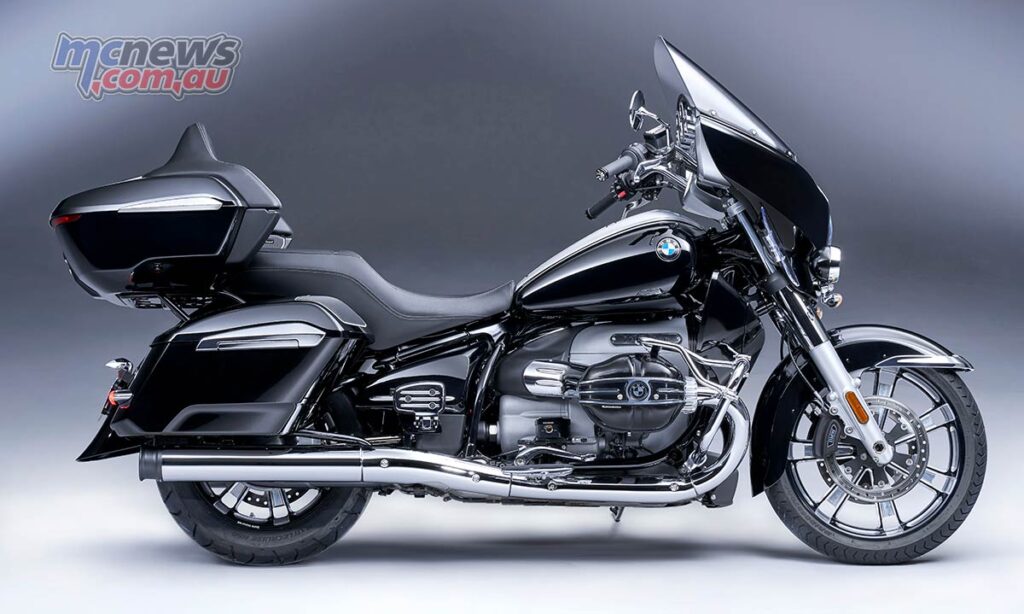
Special features of the new R 18 Transcontinental include: Front fairing with high windshield, wind deflector and flaps. Cockpit with four analogue round instruments and 10.25 inch TFT colour display, additional headlamp, Marshall sound system, engine protection bars, cases, top case, seat heating, chrome trim and an engine in Silver metallic.
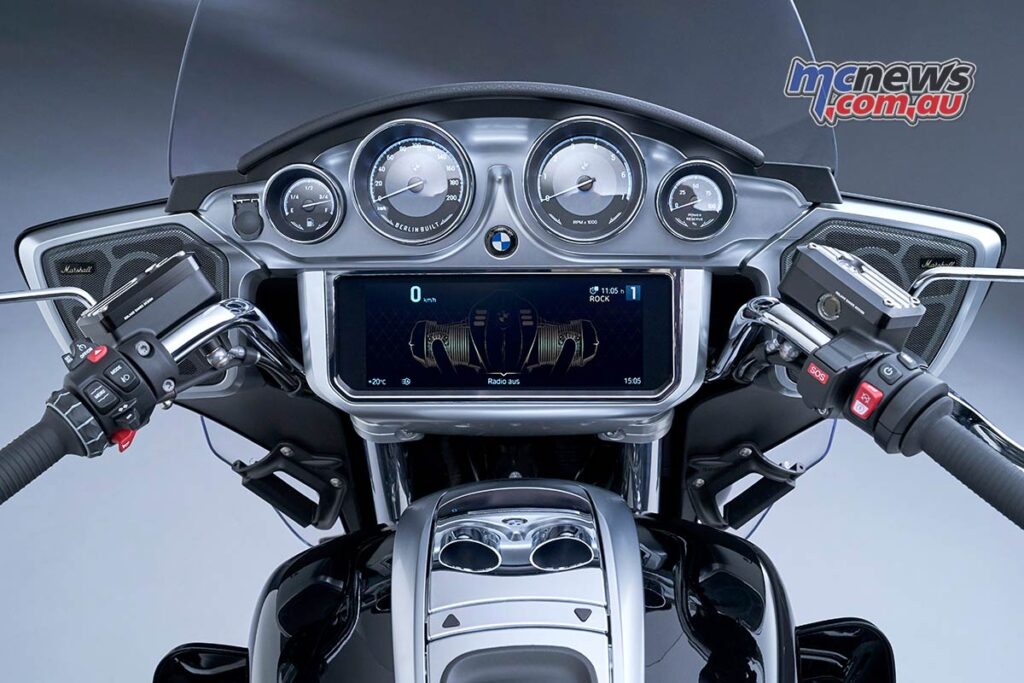
In contrast, the new R 18 B does without a top case and, in the true style of a bagger, offers a low windshield, a slimmer seat and a matt black metallic engine among other things.
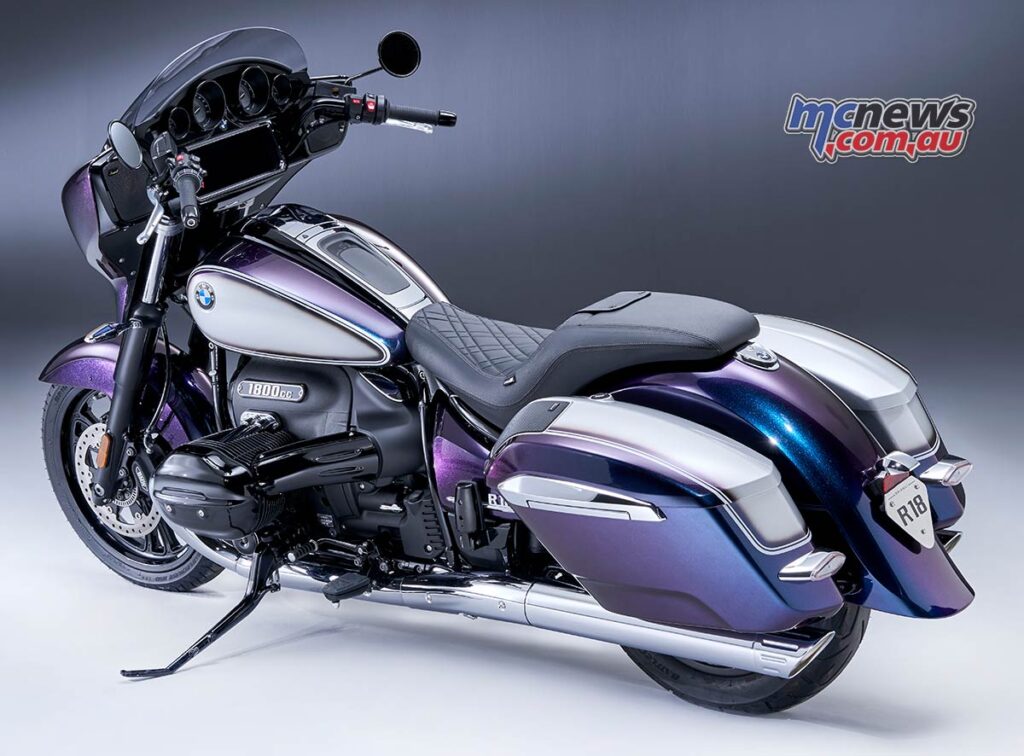
The heart of the new R 18 Transcontinental and R 18 B is the twin-cylinder boxer engine, the “Big Boxer”. Not only its impressive appearance, but also its technical specifications show its ties to the traditional air-cooled boxer engines that have provided inspiring riding experiences for more than seven decades since BMW Motorrad began manufacturing motorcycles in 1923.
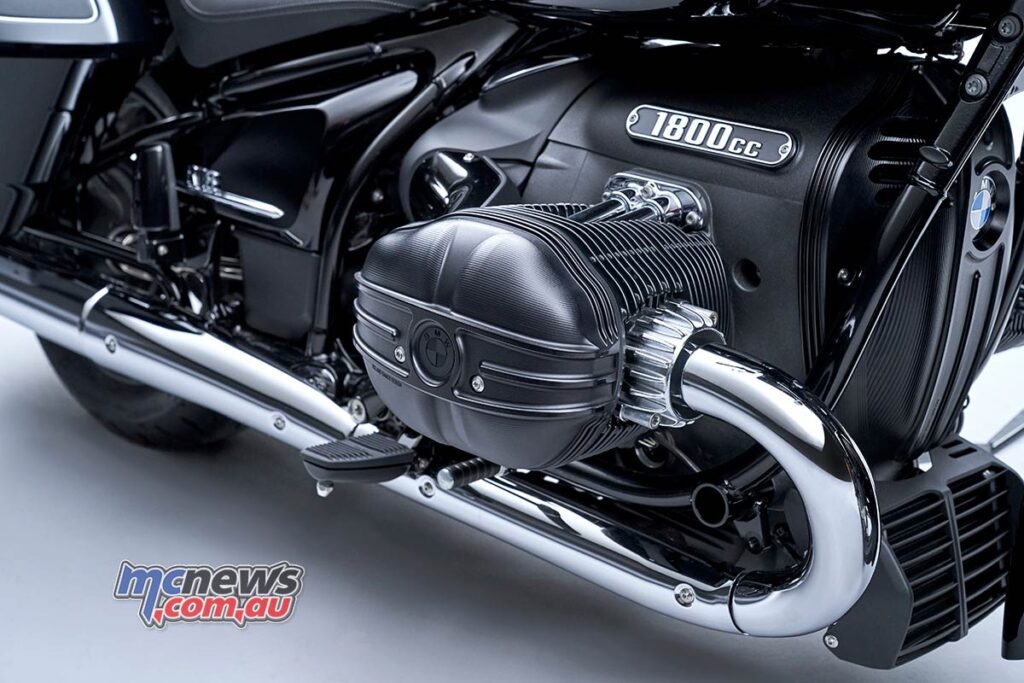
The most powerful twin-cylinder flat twin engine ever built in motorbike series production boasts an engine capacity of 1,802 cc. It generates an output of 67 kW (91 hp) at 4,750 rpm. In the 2,000 to 4,000 rpm range, it delivers more than 150 Nm of torque at all times as well as great pulling power and a sweet beat.
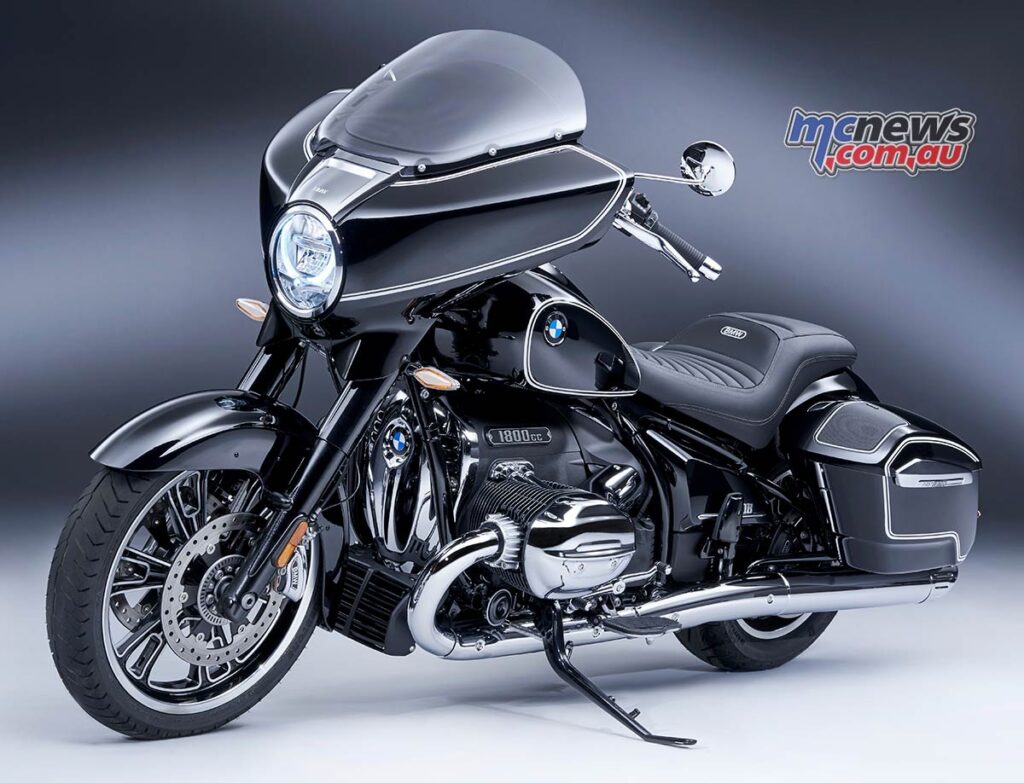
Talking of beats…. With the Marshall sound system, the new R 18 Transcontinental and R 18 B promise an intense sound experience. As standard the new R 18 Transcontinental and R 18 B feature a sound system developed in collaboration with the British manufacturer Marshall, featuring two-way speakers integrated into the front of the fairing. Black cover grilles with white Marshall lettering round off the classic look.
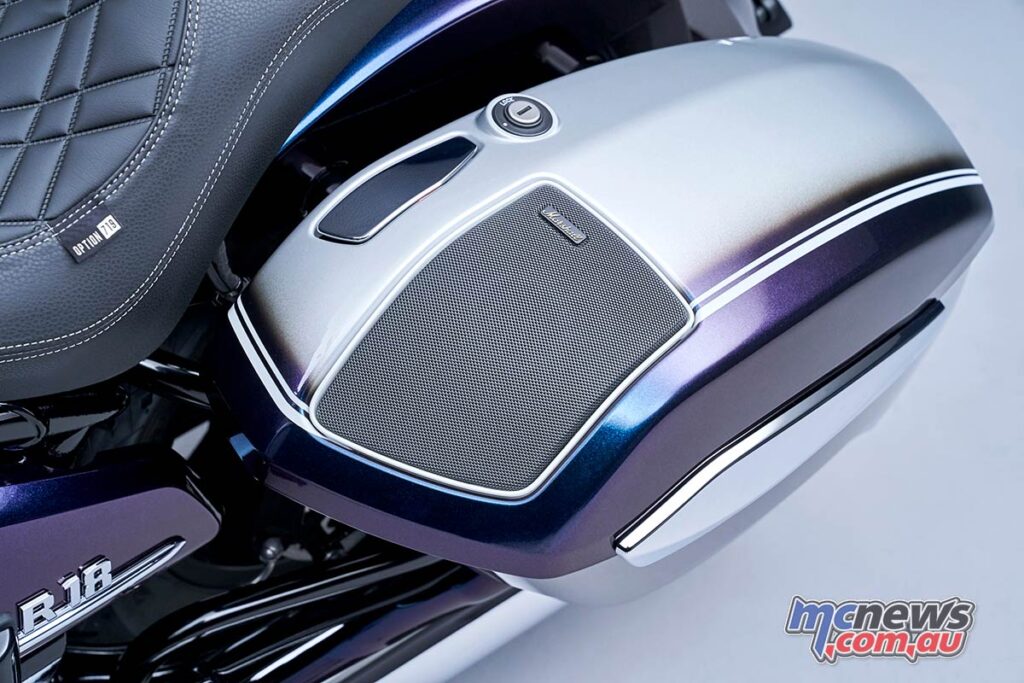
The Marshall Gold Series Stage 1 and Stage 2 sound systems are optionally ex works to provide even more intensive listening pleasure. Up to four loudspeakers and two subwoofers with 280 watts of total output.
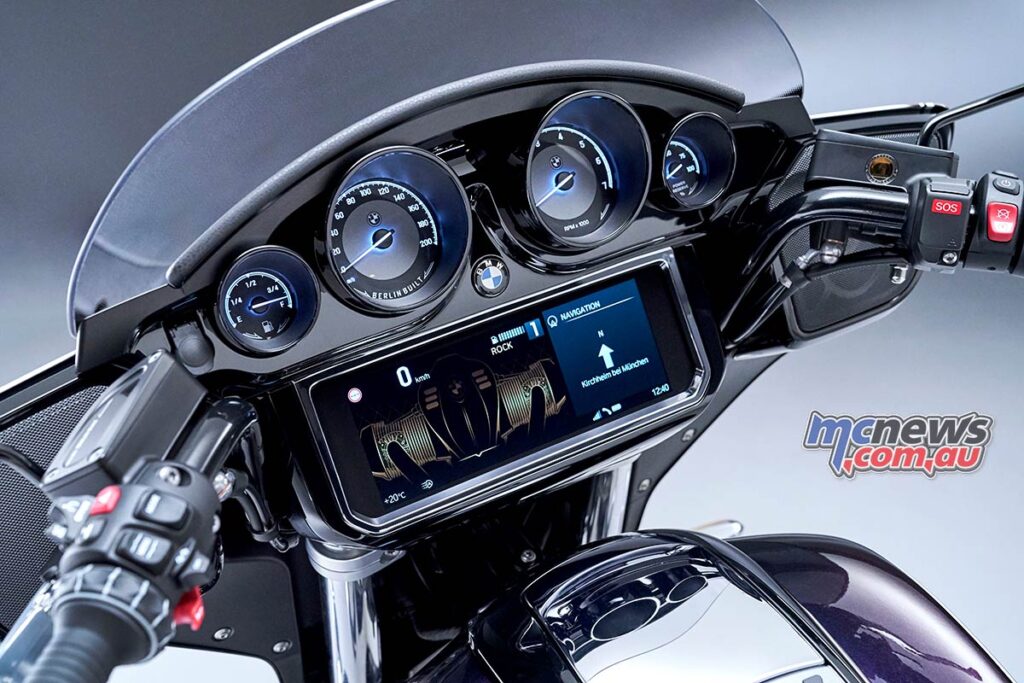
DAB-FM following. The received signal is compared and the best signal is automatically selected.
Equalising profiles – listening-optimised profiles for output adaptation for a perfect audio experience o via the helmet: one profile (studio). o via loudspeakers: four profiles (bass-boost, treble-boost, voice, balanced).
The cockpit, specially designed for the new R 18 Transcontinental and R 18 B, with four analogue round instruments and a 10.25 inch TFT colour display, blends into the classic appearance.
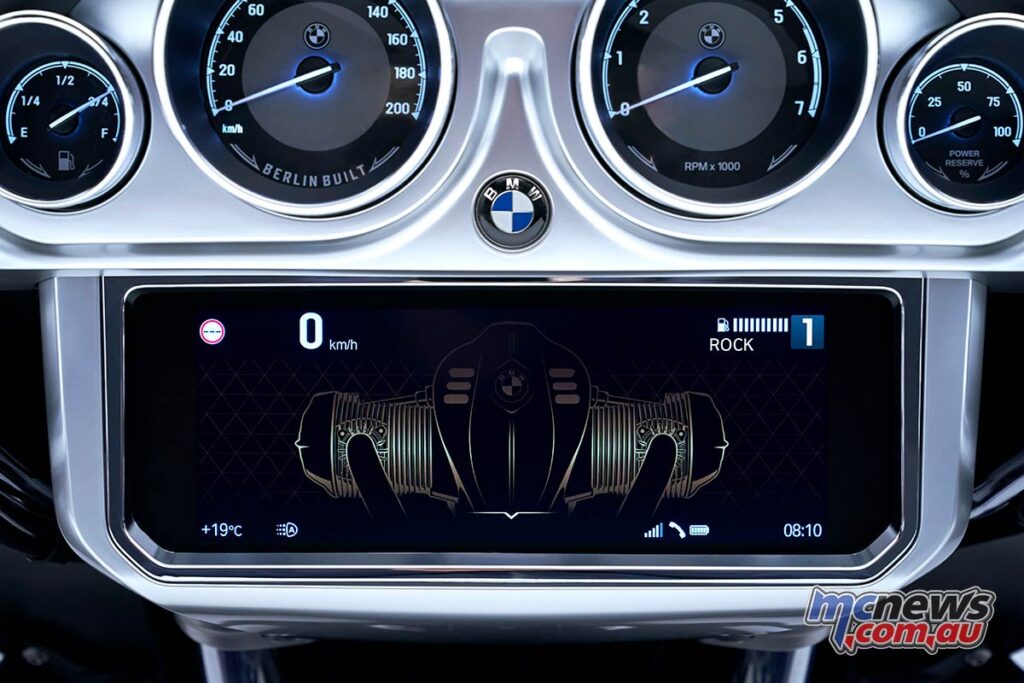
Featuring the iconic “BERLIN BUILT” lettering, it follows the classic style of the new R 18 Transcontinental and R 18 B on the one hand, and on the other hand offers a perfectly readable TFT colour display providing a maximum of functionality and information.
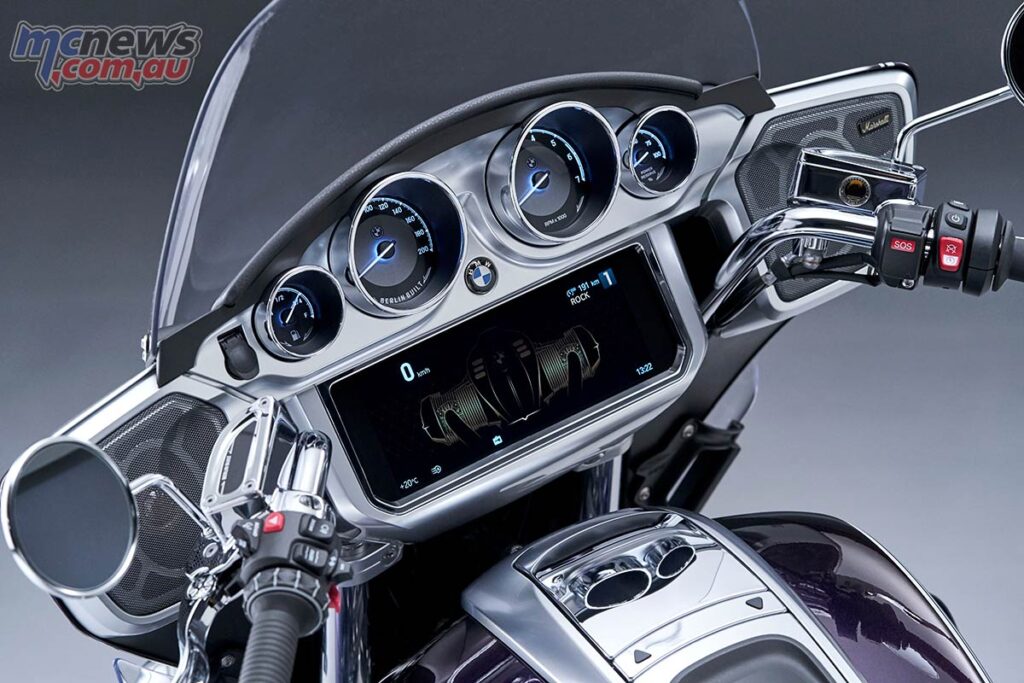
Marshall Gold Series Stage 2 – The new R 18 Transcontinental is equipped with the Marshall Gold Series Stage 2, a system of six loudspeakers and a booster that meets even the highest demands in terms of sound quality and listening pleasure while riding. Two Marshall 2-way loudspeakers with 25 watts of output each are integrated in the front of the fairing, each complemented by a 90 watt subwoofer in the upper front area of the cases. In addition, there is a 2-way loudspeaker with 25 watts of output in the front side section of the top case backrest. The booster also puts out 180 watts.
Navigating the screens is by way of BMW’s very well proven multi-controller wheel set-up on the left bar.
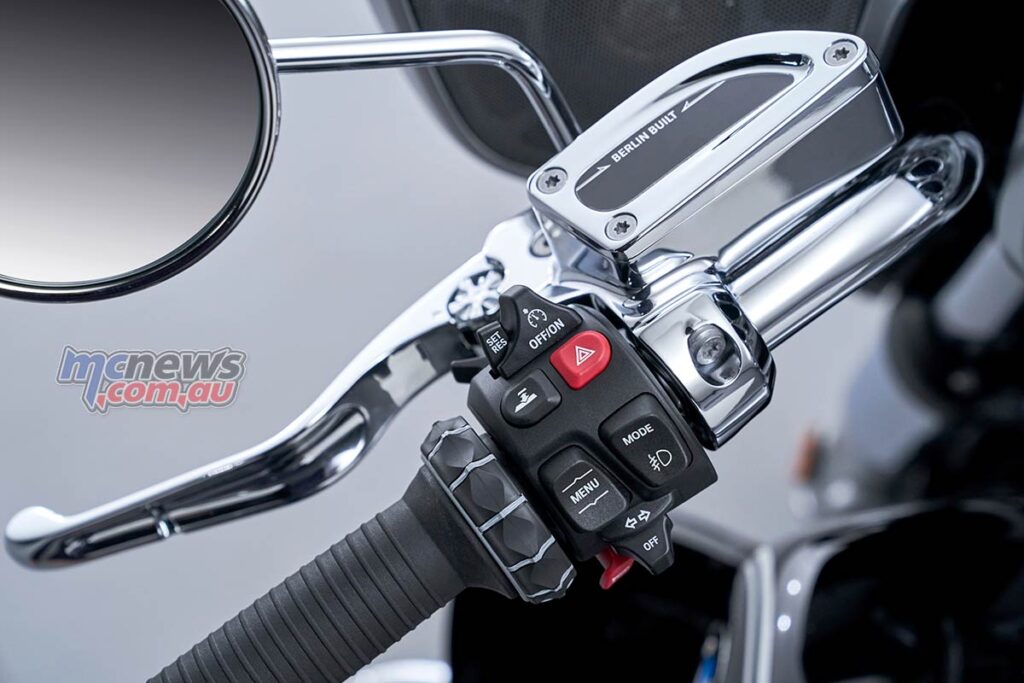
The suspension elements of the new R 18 Transcontinental and R 18 B use a telescopic fork and a directly swinging-arm mounted cantilever suspension strut with travel-dependent damping and automatically adjustable spring pre-load.
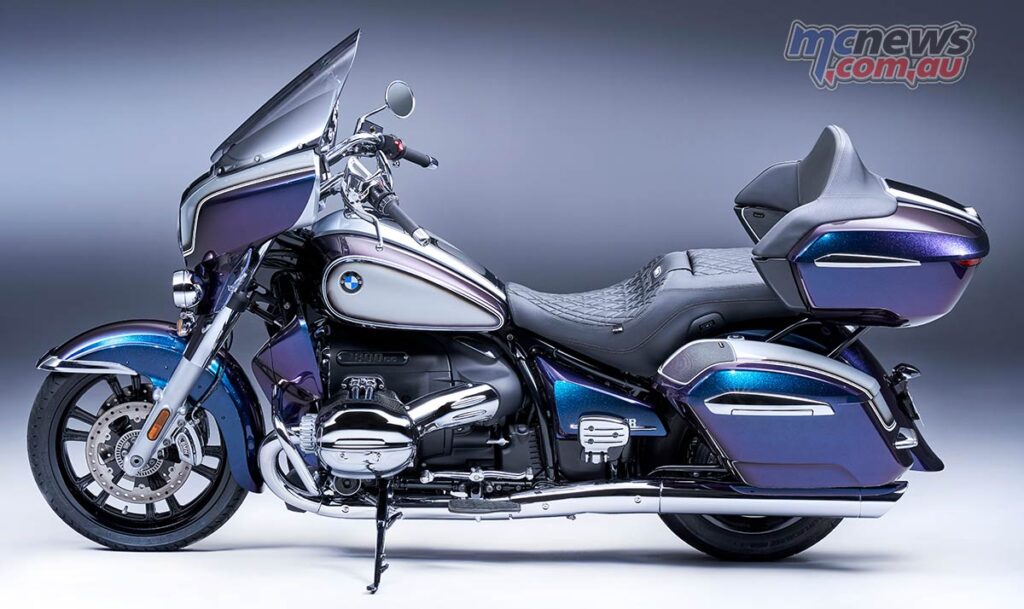
In order to achieve the best possible ride response even when riding with a pillion and fully loaded, the rear suspension strut features progressive damping and automatic load compensation.
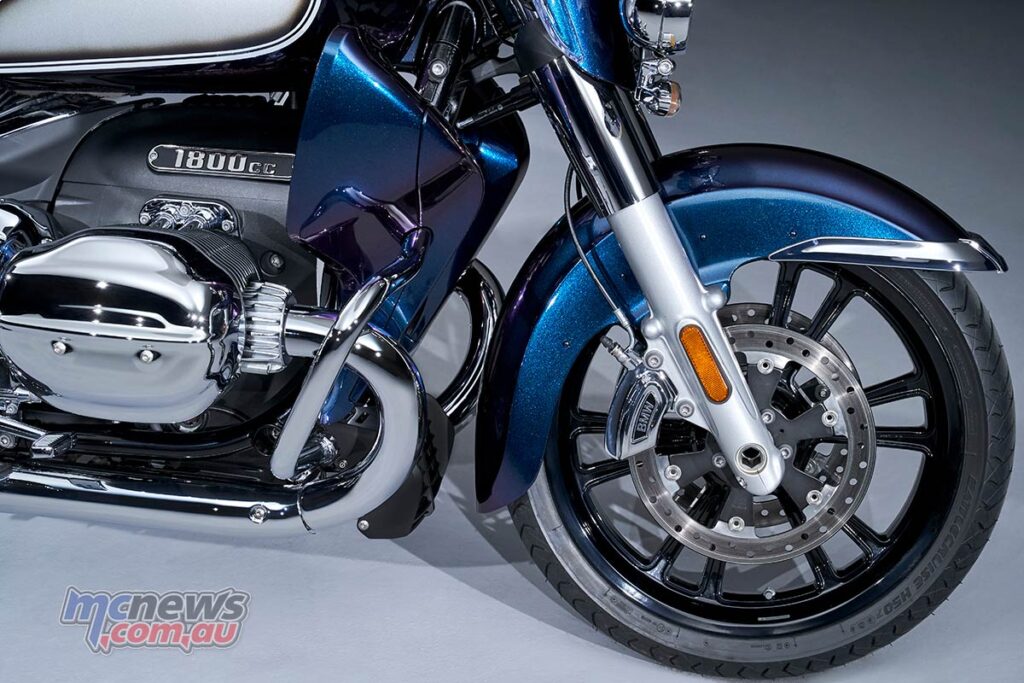
As in the legendary BMW R 5, the tubes of the telescopic fork are encased in fork sleeves. The fork tube diameter is 49 mm, suspension travel is 120 mm at the front and rear.
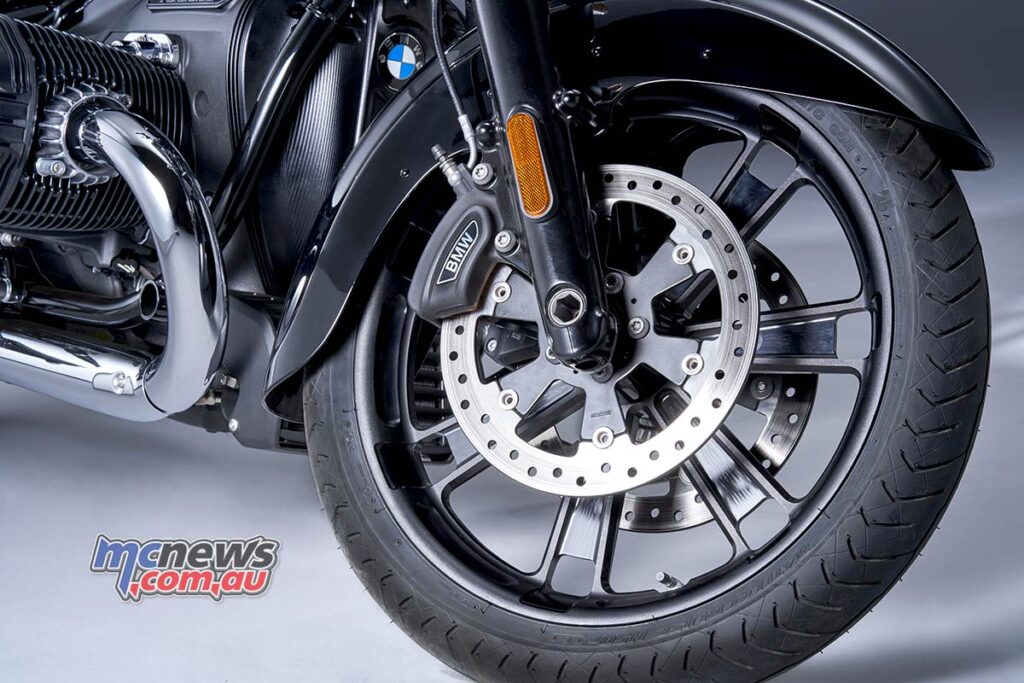
The new R 18 Transcontinental and R 18 B are decelerated by a double disc brake at the front and a single disc brake at the rear in conjunction with four-piston fixed callipers and BMW Motorrad Full Integral ABS.
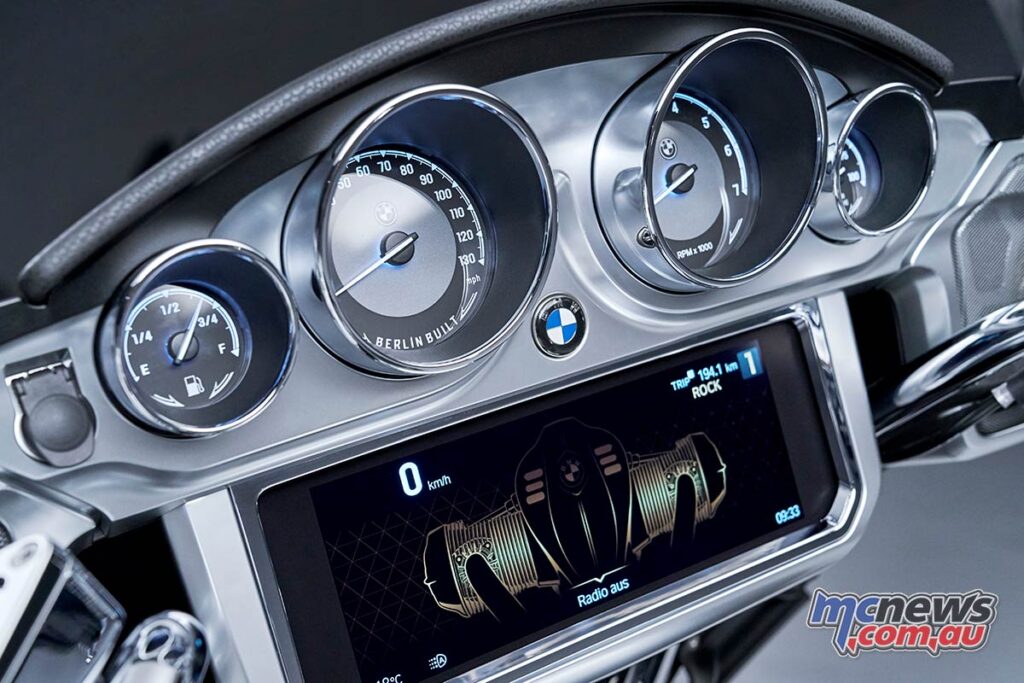
The R 18 Transcontinental and R 18 B are already equipped as standard with DCC electronic cruise control (Dynamic Cruise Control). DCC automatically regulates the riding speed set by the rider. Dynamic means that the pre-selected speed is kept constant even when riding downhill. Active Cruise Control (ACC) allows relaxed gliding with distance control – without the rider having to adjust the speed to the vehicle in front. With the aid of radar sensors integrated in the front fairing, the motorcycle is either accelerated automatically to adjust the speed or the new, standard full integral braking system is applied for deceleration purposes, depending on the situation on the road. ACC also ensures particularly safe cornering. Where necessary, the cornering control system automatically reduces the speed, giving the rider the right speed for a comfortable and safe banking angle.
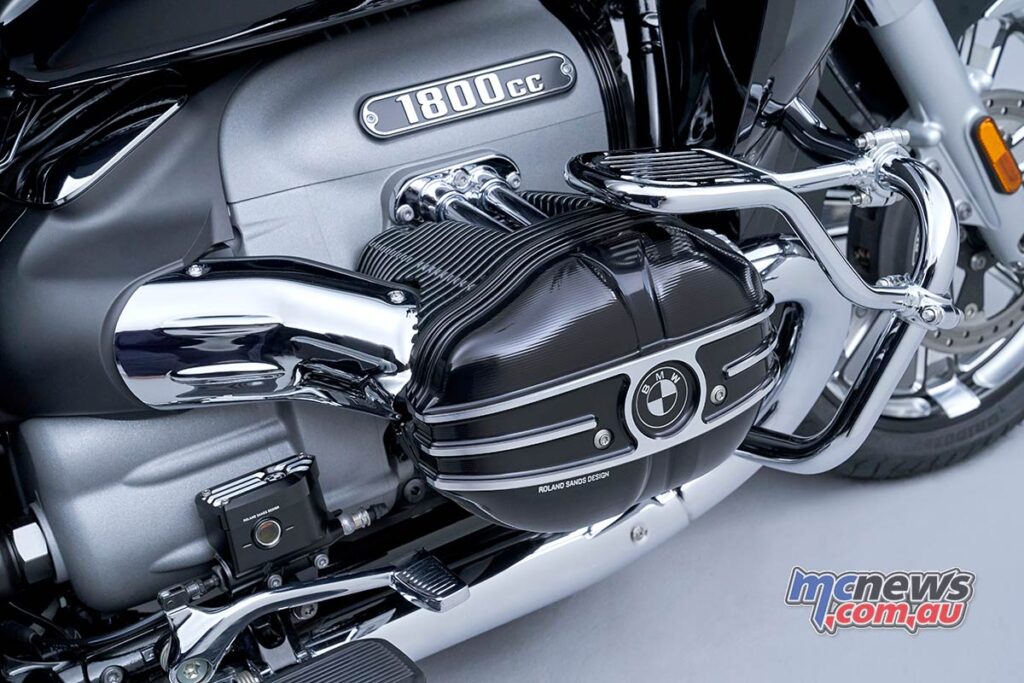
The new R 18 Transcontinental and R 18 B feature a casual, so-called mid-mount pegs, entirely in keeping with the BMW Motorrad philosophy of the best riding position for control of the motorcycle. This classic position behind the cylinders is not only typical of BMW, it also allows a relaxed and active riding position for the best possible motorcycle control. That said, a foot-forward position for highway cruising can be achieved via the accessories catalogue, as can be seen below.
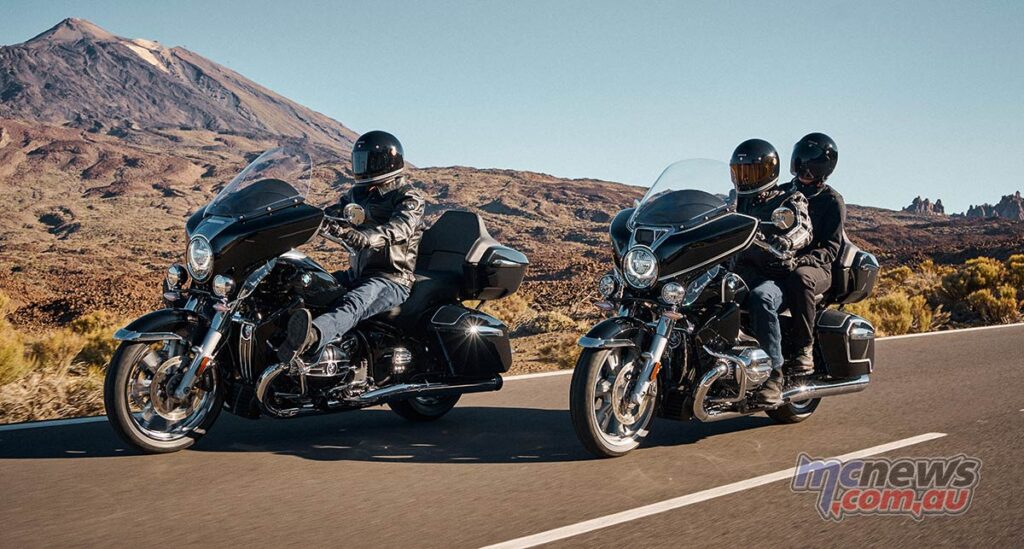
The R 18 Transcontinental is equipped with an especially comfortable seat and seat heating as standard to ensure long-distance riding comfort even in two-person operation. The R 18 B has a somewhat slimmer two-person seat bench. The new R 18 Transcontinental is fitted as standard with running boards and the new R 18 B with wider and more comfortable footrests than the R 18.
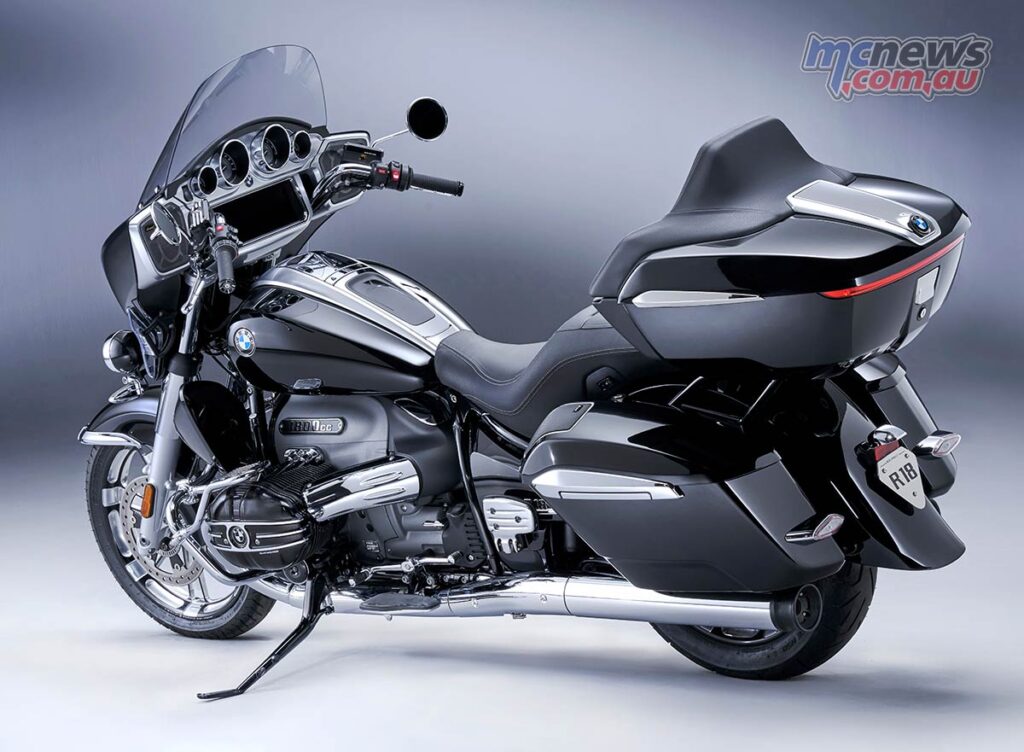
Right from the time of market launch, the new R 18 Transcontinental and R 18 B will be available worldwide as exclusive R 18 Transcontinental First Edition and R 18 B First Edition versions. They combine the R 18 look with exclusive features in classic black paintwork with white double-lining. Further highlights are the specially designed surfaces (Chrome Package), high-grade stitching on the seat and the “First Edition” lettering.
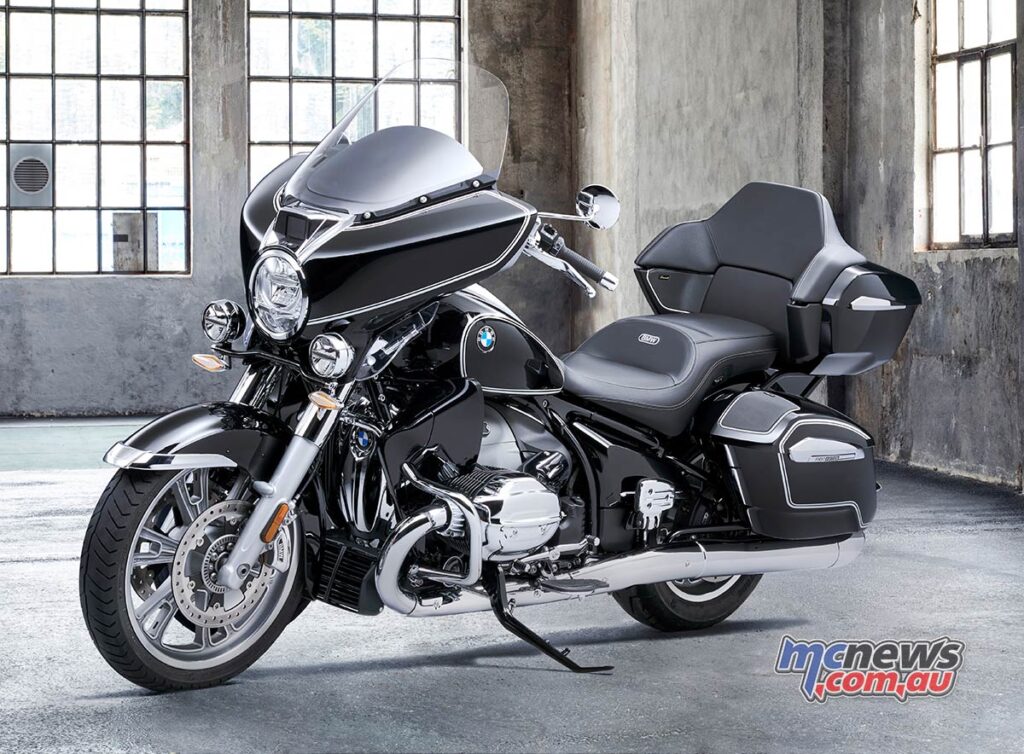
The Original BMW Motorrad Accessories range offers a maximum of individualisation options for tailoring the R 18 Transcontinental and R 18 B to your personal taste. The design collections of milled aluminium parts familiar from the R 18 and R 18 Classic, which were created together with Roland Sands Design, are also available for the new R 18 Transcontinental and R 18 B. With regard to audio systems, BMW Motorrad cooperates with the British manufacturer Marshall. For the new R 18 Transcontinental and R 18 B, BMW Motorrad offers a range of particularly high-quality and exclusive optional extras as “Option 719”, such as Option 719 Galaxy Dust metallic paint finish and Original BMW Motorrad Accessories.
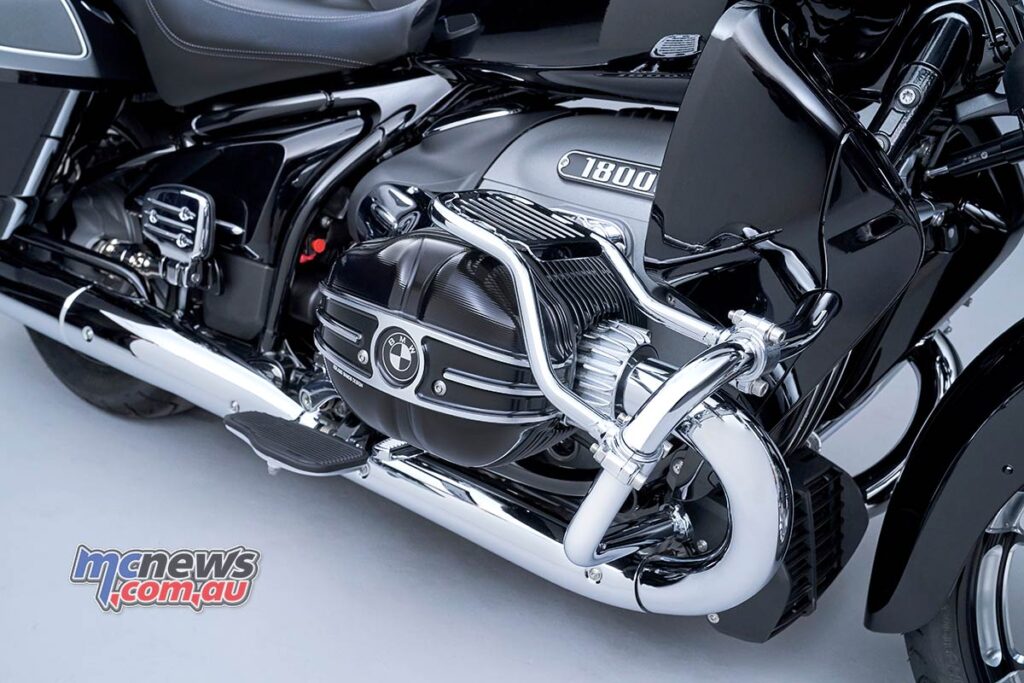
BMW R 18 Transcontinental and R 18 B highlights
- Handlebar-mounted fairing for excellent wind and weather protection.
- High windshield (R 18 Transcontinental).
- Low windshield (R 18 B).
- Cases in body colour paint finish (27 litres, with audio 26.5 litres).
- Vibration-decoupled top case in body colour paint finish (48 litres, with audio 47 litres, R 18 Transcontinental only).
- Wind deflectors in body colour finish (R 18 Transcontinental only).
- 24 litre fuel tank.
- Cockpit with four analogue round instruments and 10.25 inch TFT colour display.
- Biggest ever BMW boxer engine with a capacity of 1 802 cc.
- Output 67 kW (91 hp) at 4 750 rpm, maximum torque 158 Nm at 3 000 rpm.
- More than 150 Nm available at all times from 2 000 to 4 000 rpm
- Open-running, gloss nickel-plated universal-shaft drive based on the classic role model.
- Elaborately manufactured double-loop tube steel frame with backbone of sheet metal formed parts provide the optimal package.
- Rear swinging arm with enclosed axle drive in rigid-frame design.
- Telescopic fork with fork sleeves and cantilever spring strut with travel-dependent damping as well as automatic load compensation ensure optimum riding under all conditions.
- Comfortable ergonomics for relaxed cruising and touring with the best possible motorcycle control.
- Disc brakes at the front and rear and cast light alloy wheels.
- BMW Motorrad Full Integral ABS.
- Dynamic Cruise Control (DCC) as standard.
- Active Cruise Control (ACC) – cruise control with integrated distance control for relaxed touring as an ex works option.
- State-of-the-art LED lighting technology, classically interpreted.
- Adaptive turning light with swivel module for even better illumination of the road when cornering as an ex works option.
- Engine guard (R18 Transcontinental only)
- Seat heating as standard (R 18 Transcontinental only).
- Heated grips as standard.
- Continuously adjustable rocker switch (in connection with running boards; standard for R 18 Transcontinental).
- Keyless Ride for convenient activation of functions.
- Three riding modes as well as ASC and MSR as standard.
- Reverse assist for convenient manoeuvring and Hill Start Control for easy hill starts as ex works option.
- Three attractive colours: In addition to black and the 719 Galaxy Dust metallic option, the new R 18 B and R 18 Trancontinental are also available in Manhattan metallic matt.
- The R 18 Transcontinental “First Edition” and R 18 B “First Edition”: Exclusive look in paint and chrome.
- Extensive range of optional extras and Original BMW Motorrad Accessories as well as a cool Ride & Style Collection.
- “Option 719” equipment available as particularly high-quality and exclusive optional equipment and Original BMW Motorrad Accessories.
The full R 18 line-up
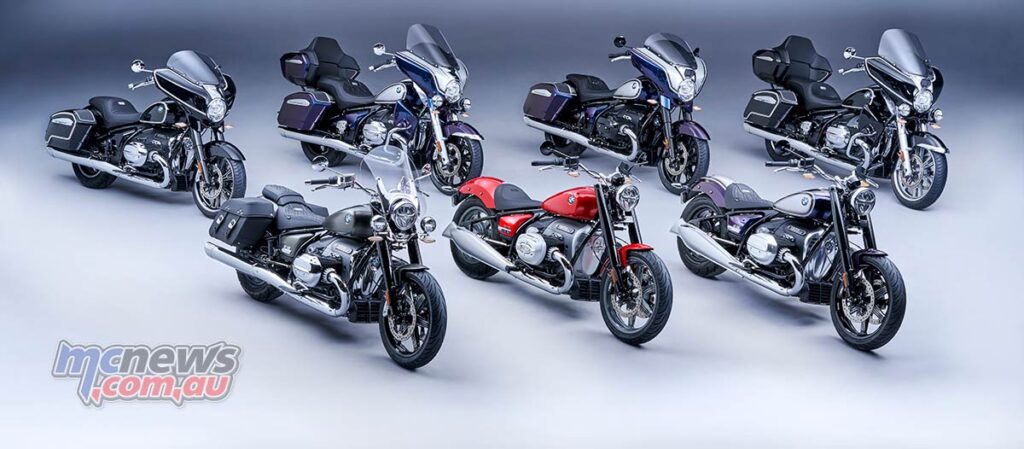
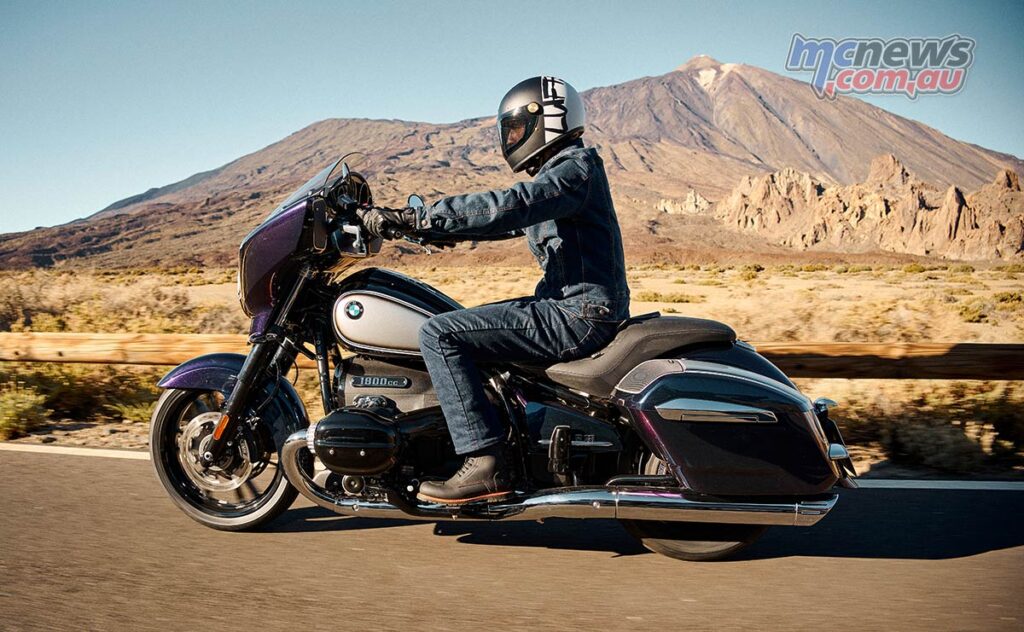
BMW R 18 B Deluxe: $39,310*
Standard specification
- 1,802cc 2-cylinder boxer engine, air/oil cooled, 9.6:1 compression, EU5, 67kW (91 hp) @ 4,750 rpm, 158Nm at 3,000rpm
- Automatic Stability Control (ASC)
- ABS
- 3 riding modes (Rock, Roll, Rain)
- Keyless Ride
- Spoke wheels
- Twin disc front brake
- Spring Strut Auto Load Levelling Dampers
- Telescopic forks with covers
- LED headlight, taillight, brake light and indicator lights
- 12V socket
- MSR (Dynamic engine brake control)
- Adjustable hand levers
- 4 Analogue instruments with 10.25″ colour TFT Display
- Active Cruise Control
- 24 litre fuel tank
- Lockable fuel cap
- Hill Start Control
- Headlight Pro (inc. Adaptive Headlight and Daytime Riding Light)
- Floorboards
- Tyre Pressure Monitor
- Central Locking
- Heated seat
- Marshall Gold Series Stage 1 sound system
- Heated Grips
- Reverse Gear
- Active Cruise Control
- Anti-theft alarm system
- Seat height: Standard 720mm (Comfort Seat High 740mm, Option 719 Seat Bench 720mm)
Options - First Edition package (inc. Black Storm Metallic with Design Option Chrome and pinstriping, contrast cut wheels, First Edition badging and First Edition key): $3,750
- Comfort seat high: $590
- Design option chrome: $2,260
- Option 719 Design Package Aero: $1,550
Colour options - Manhattan Metallic: No cost option
- Black Storm Metallic: No cost option
- Option 719 Galaxy Dust metallic/Titan Silver 2 metallic and Option 719 seat bench: $4,170
R 18 Transcontinental Deluxe: $41,675*
Includes all standard specification from the R 18 B and adds the following:
- Top case
- Straight exhaust pipes
- Highway bars
- Wind deflectors
- Marshall Gold Series Stage 2 sound system
Options - First Edition package (inc. Black Storm Metallic with Design Option Chrome and pinstriping, contrast cut wheels, First Edition badging and First Edition key): $3,750
- Comfort seat high: $590
- Design option chrome: $2,260
- Option 719 Design Package Aero: $1,550
- Manhattan Metallic: No cost option
- Black Storm Metallic: No cost option
- Option 719 Galaxy Dust metallic/Titan Silver 2 metallic and Option 719 seat bench: $4,170
Colour options - Manhattan Metallic: No cost option
- Black Storm Metallic: No cost option
- Option 719 Galaxy Dust metallic/Titan Silver 2 metallic and Option 719 seat bench: $4,170
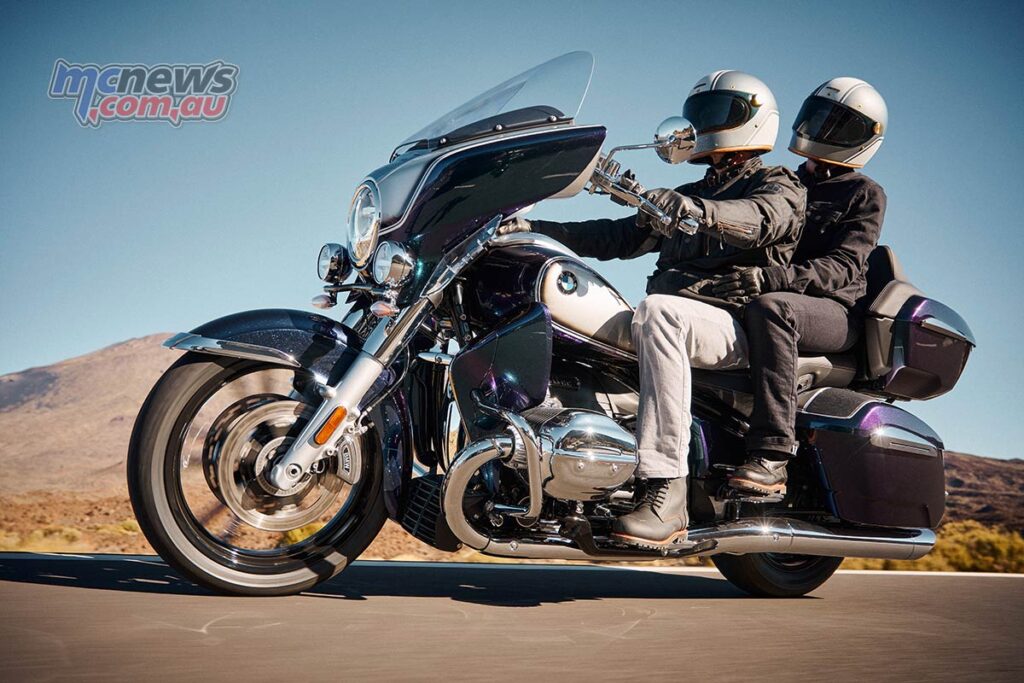
*Recommended Retail Pricing is shown and includes GST, but excludes on-road costs. Customers are advised to contact their nearest BMW Motorrad dealer for all pricing enquiries.
Source: MCNews.com.au

